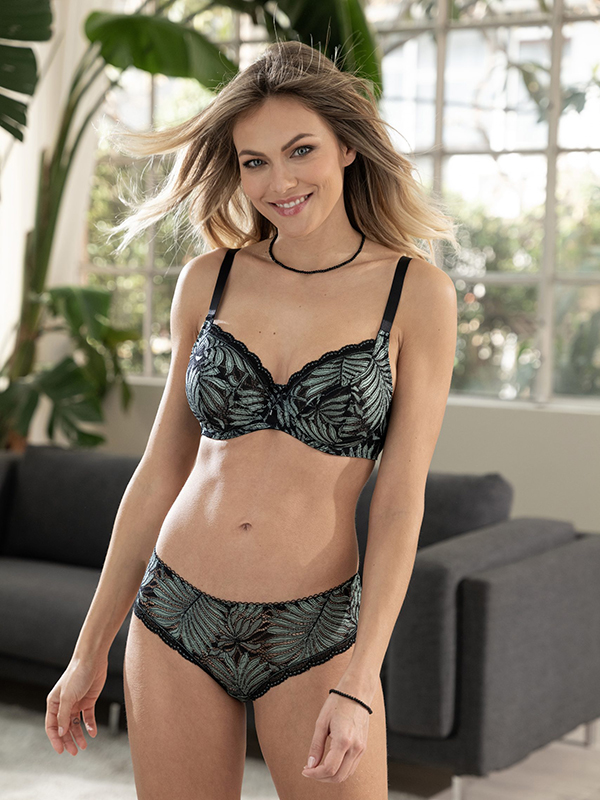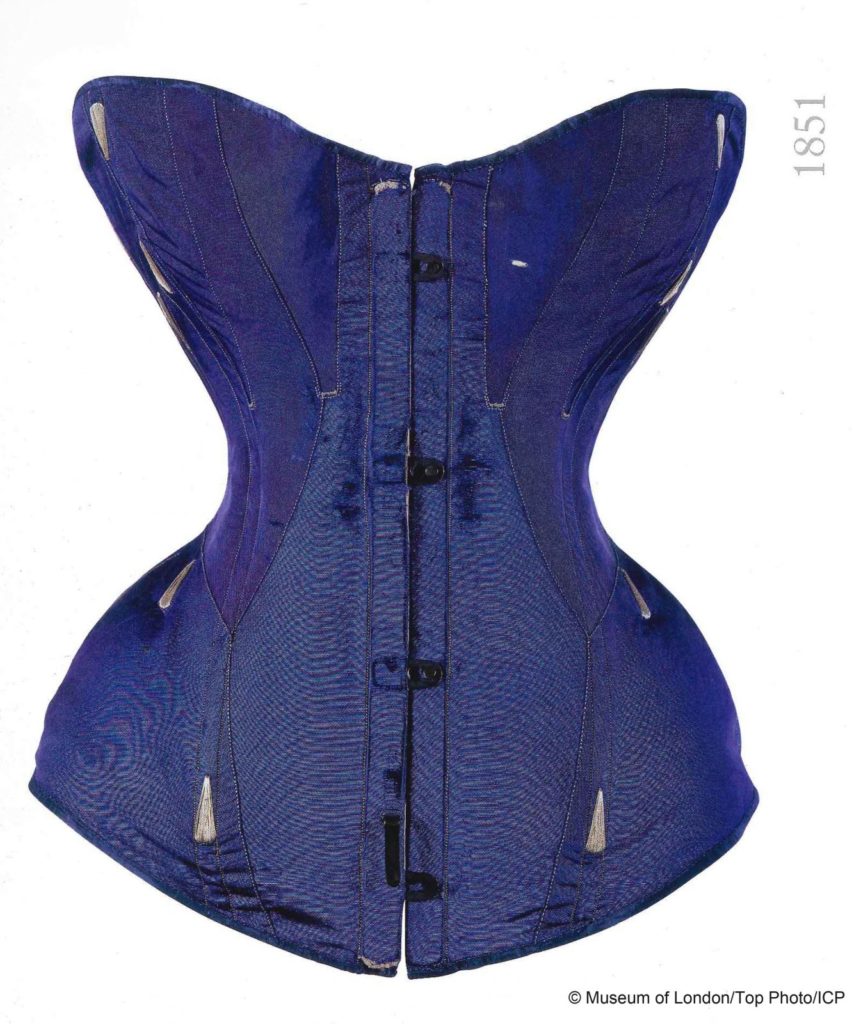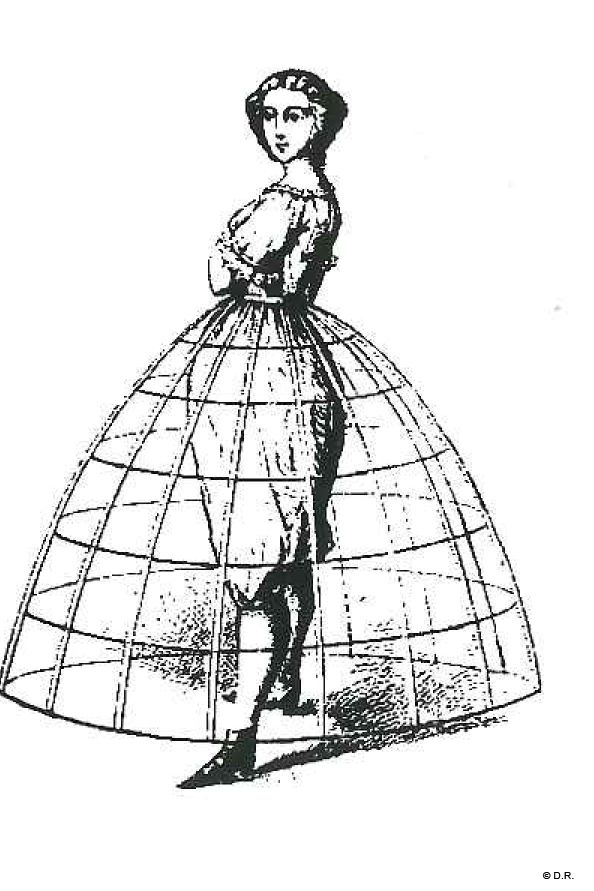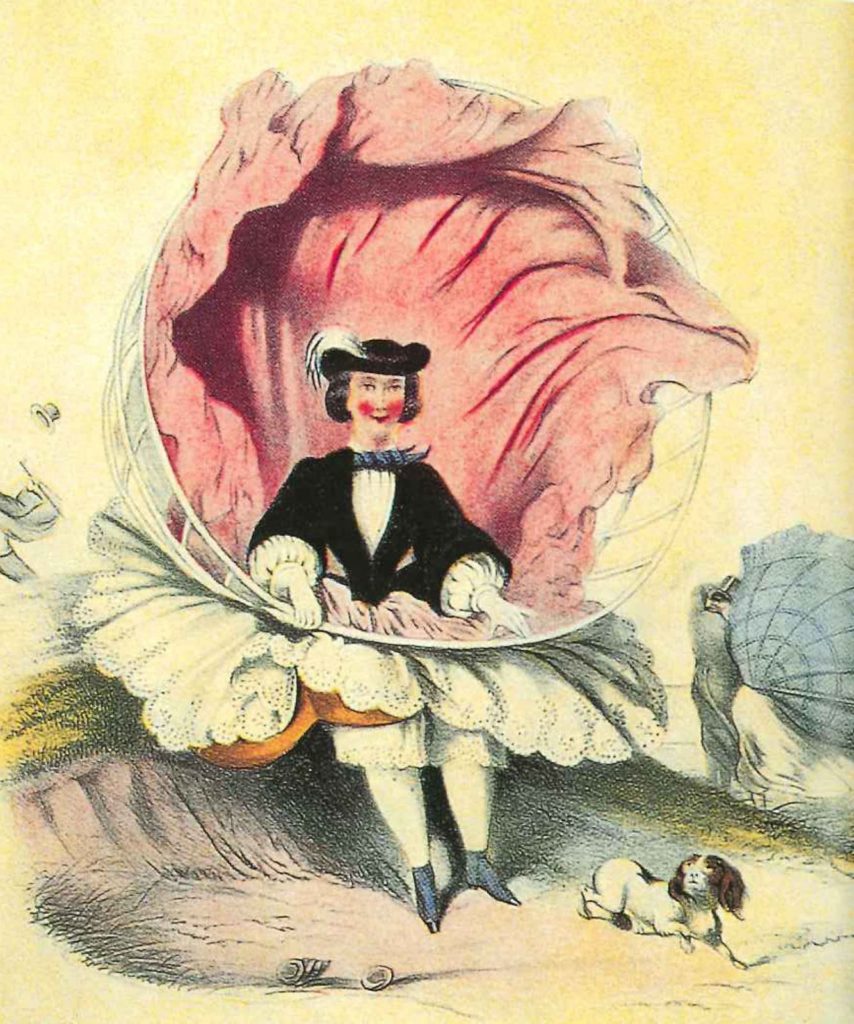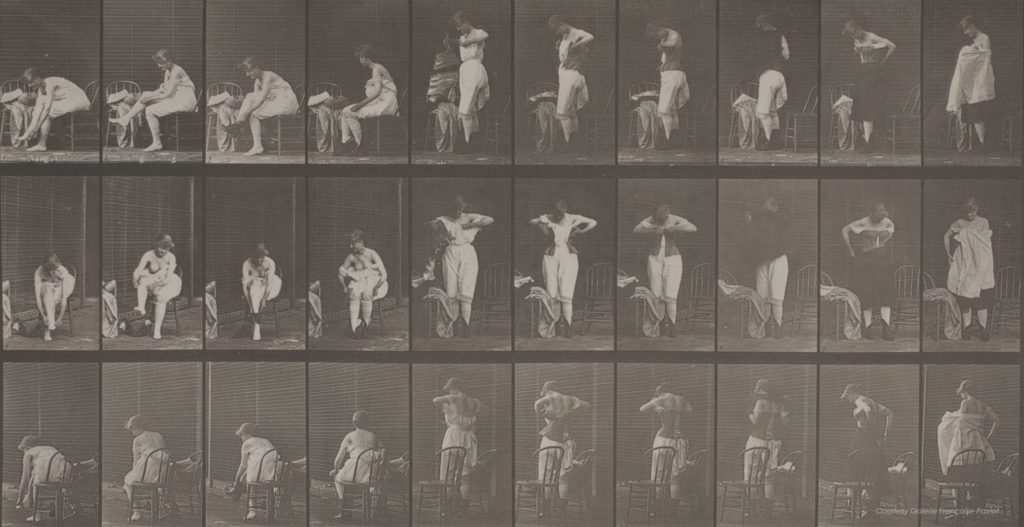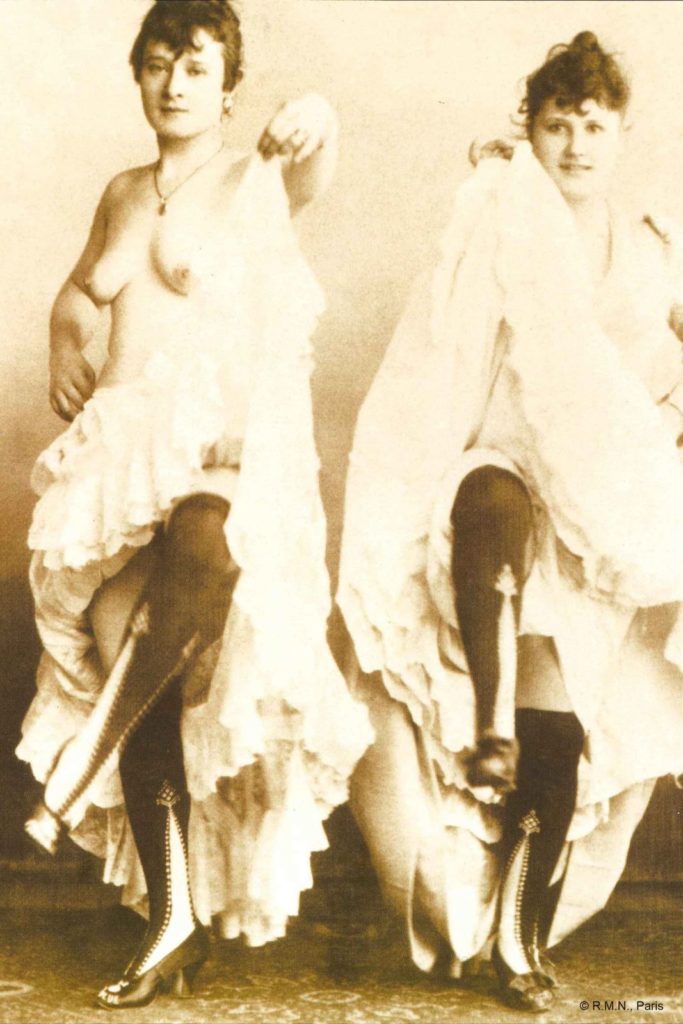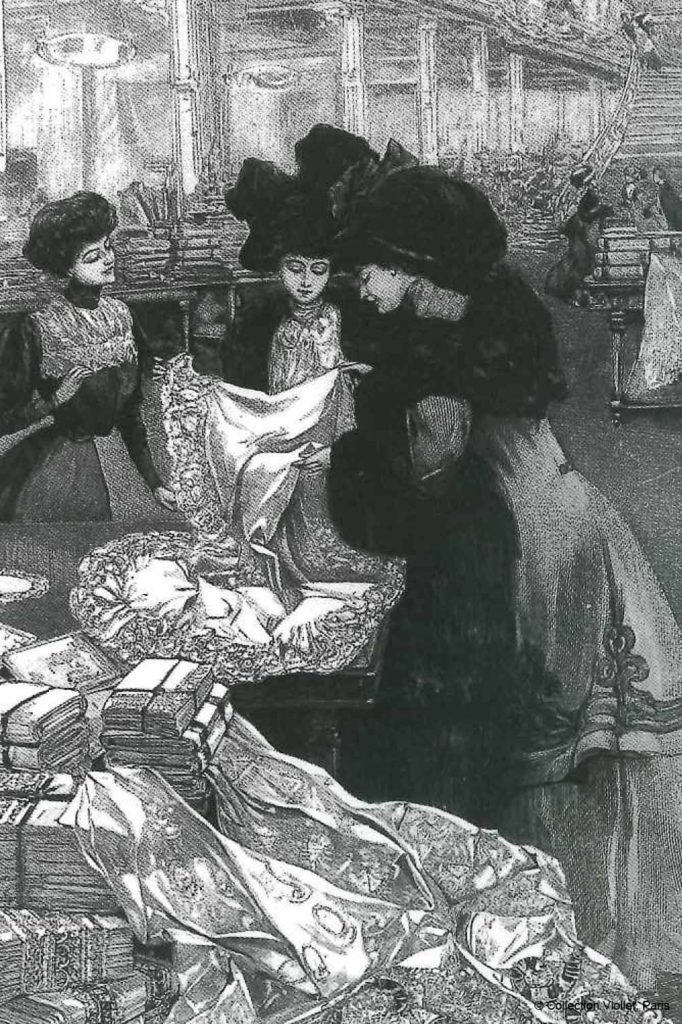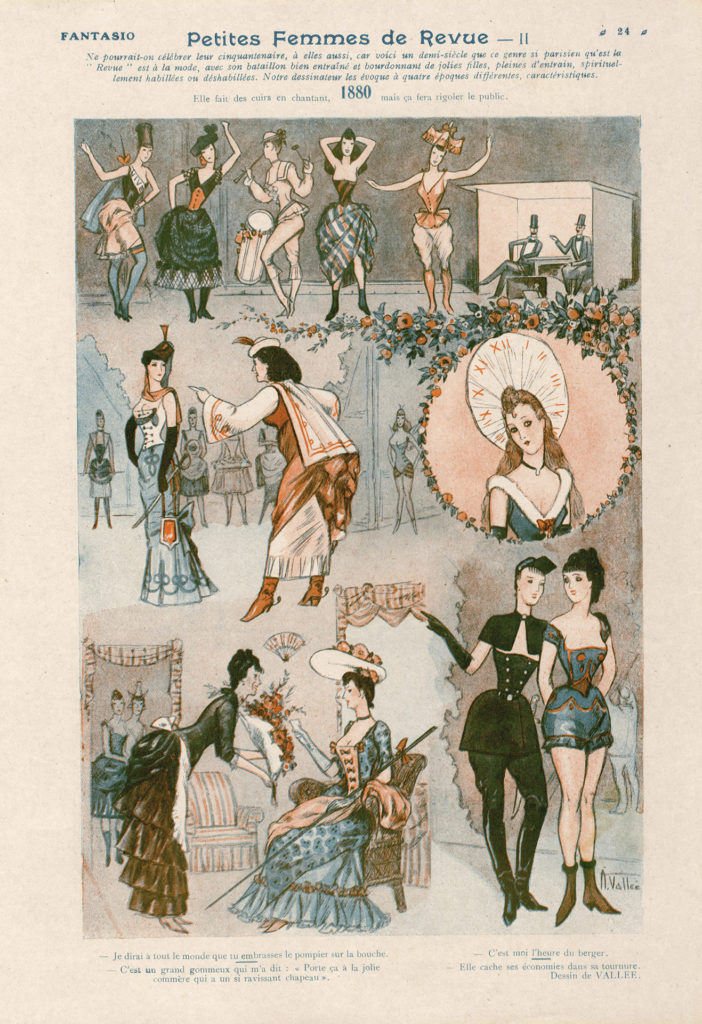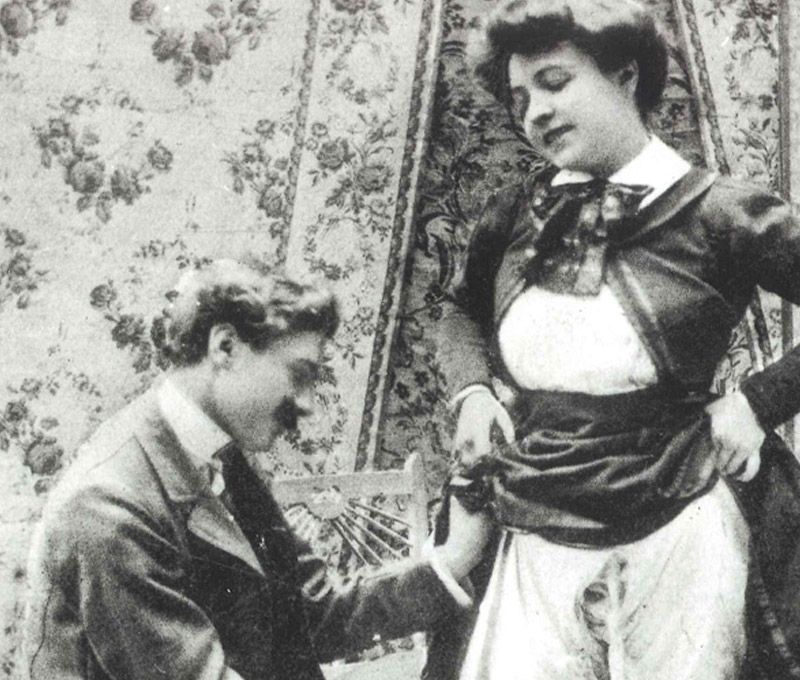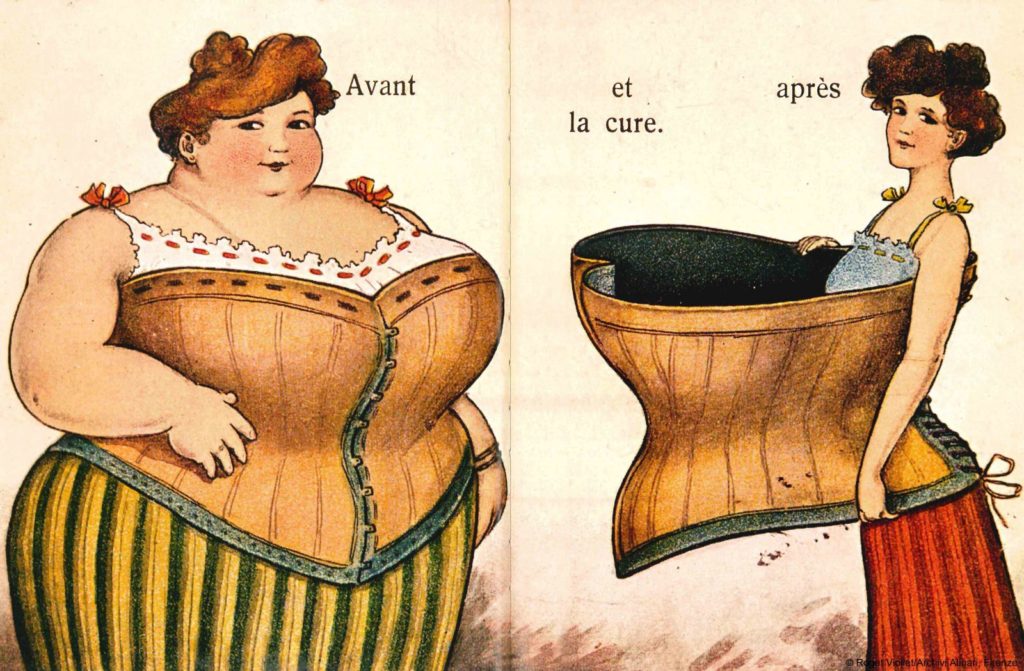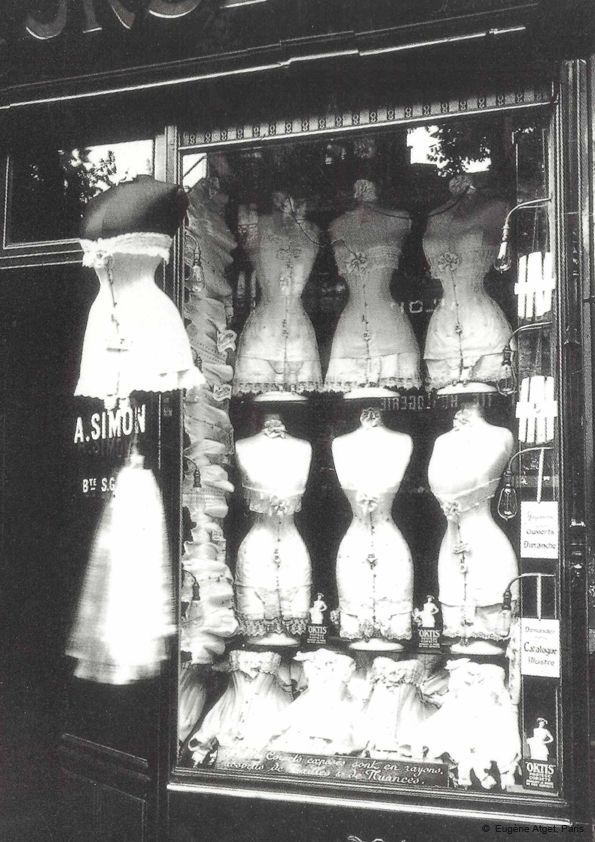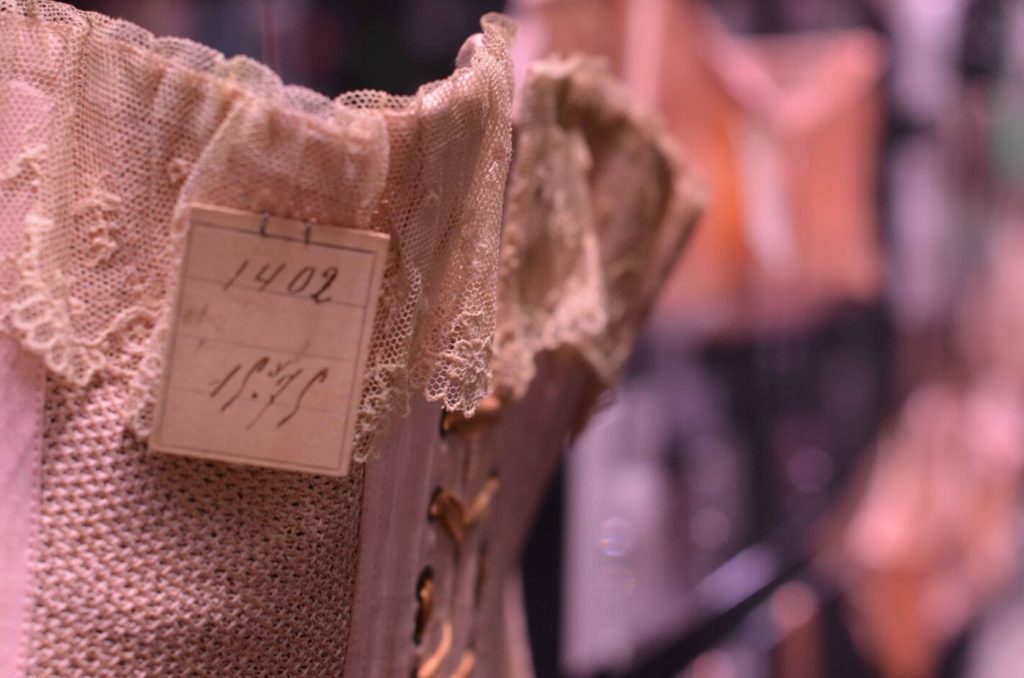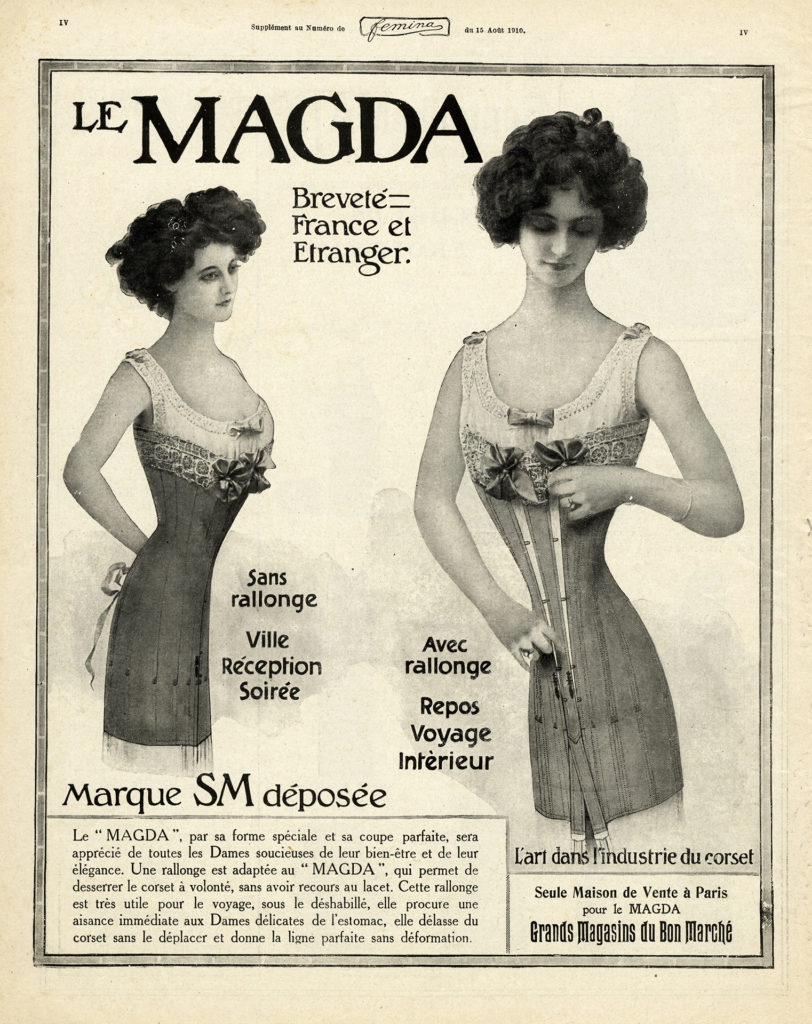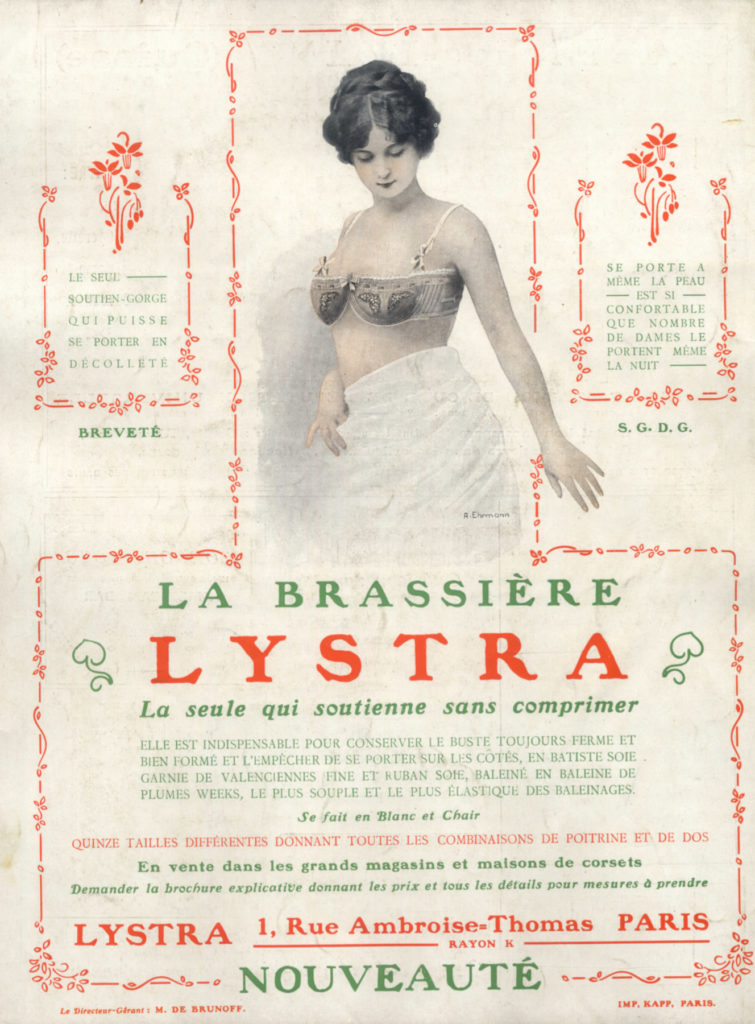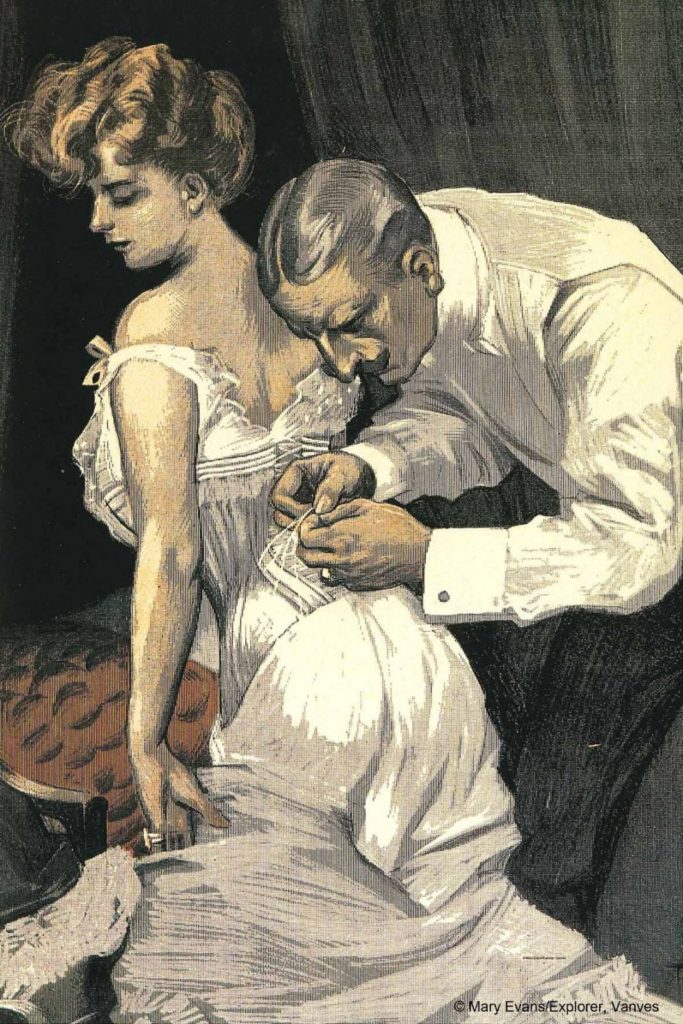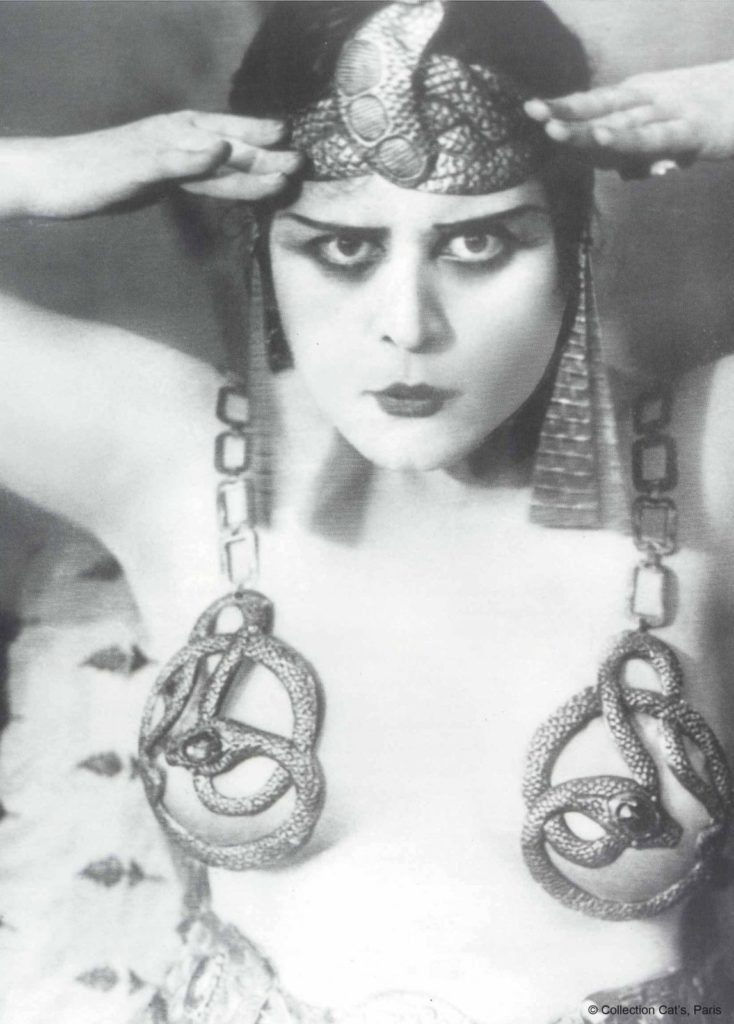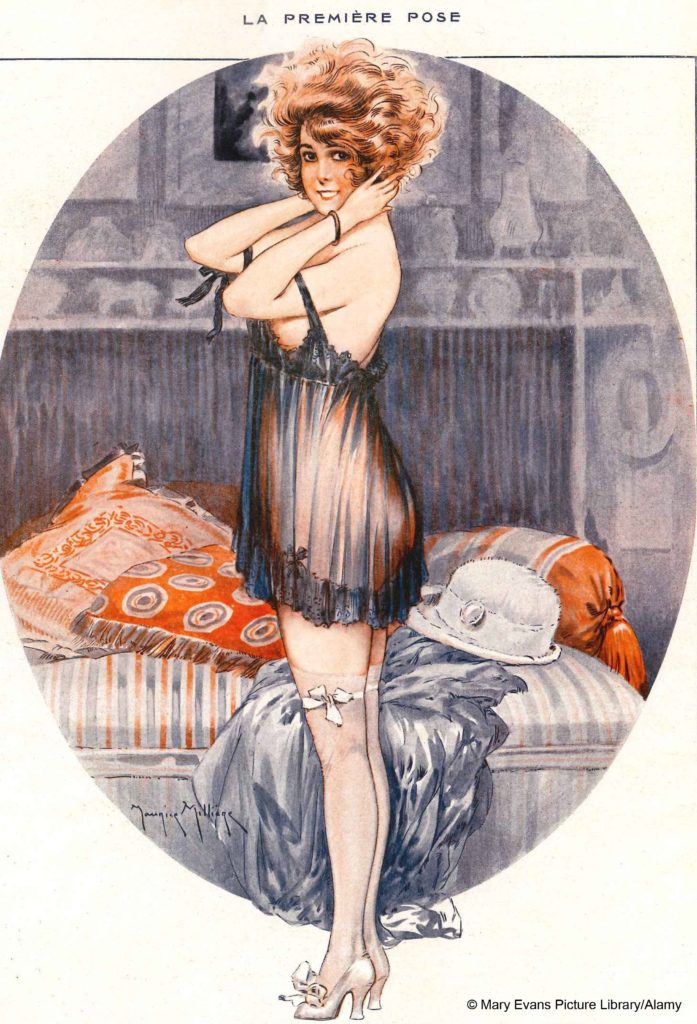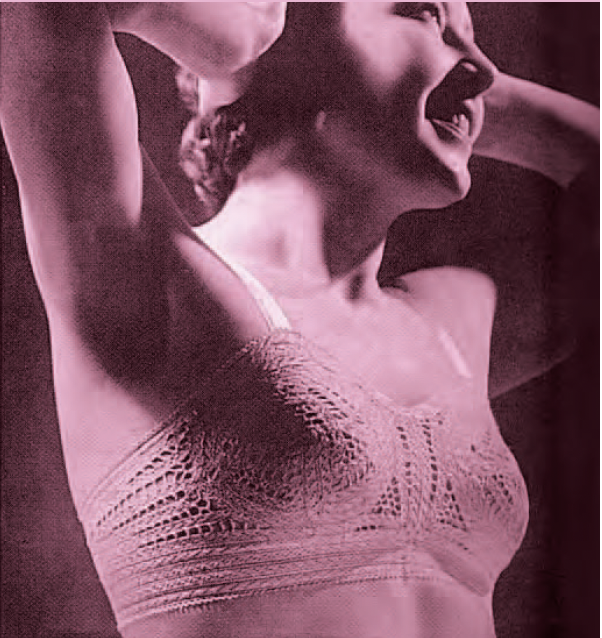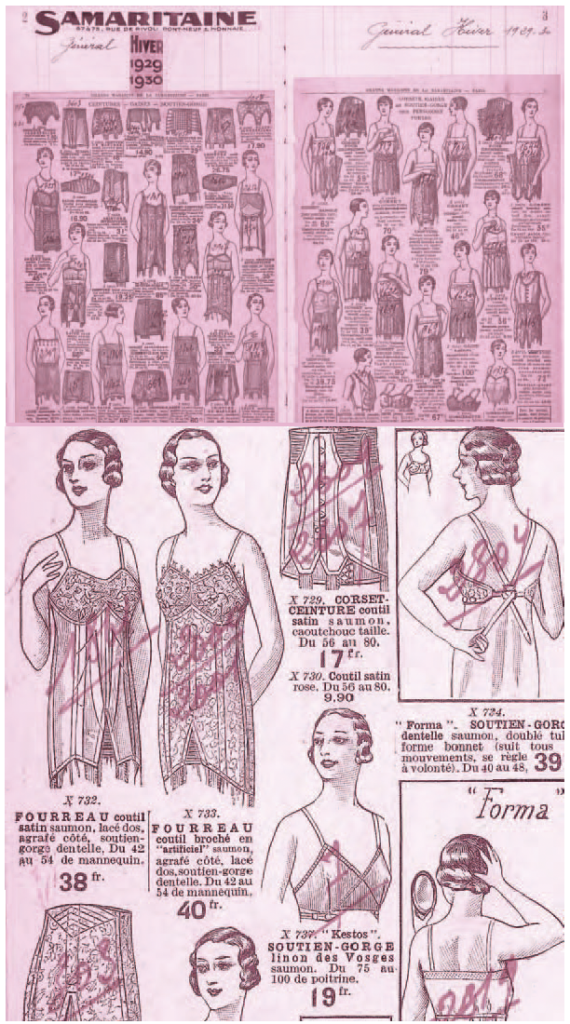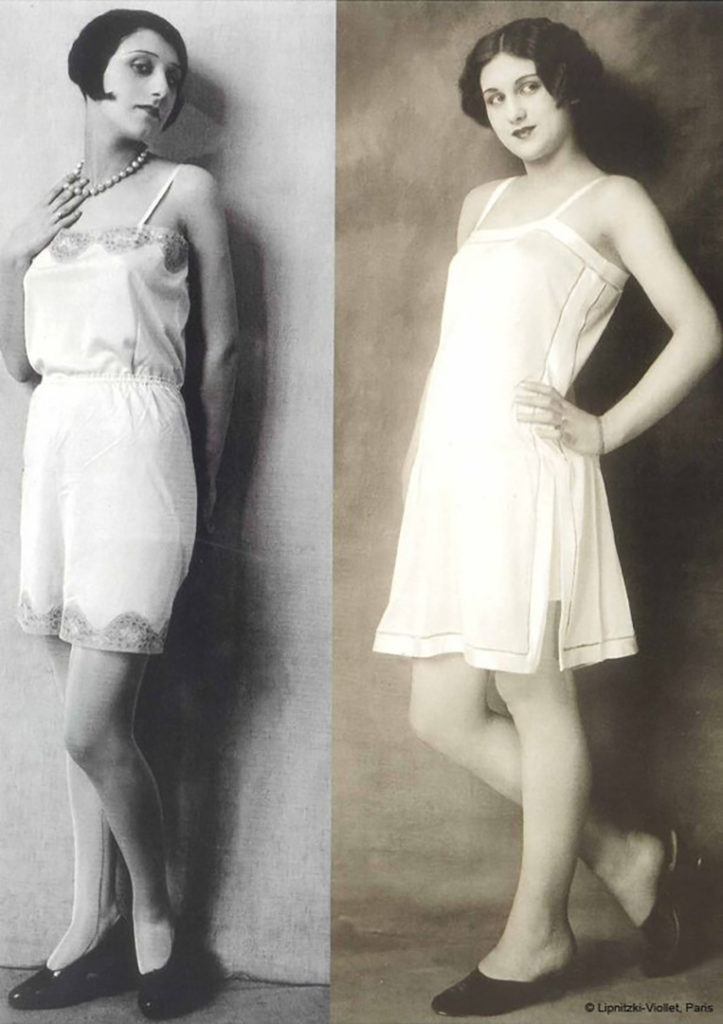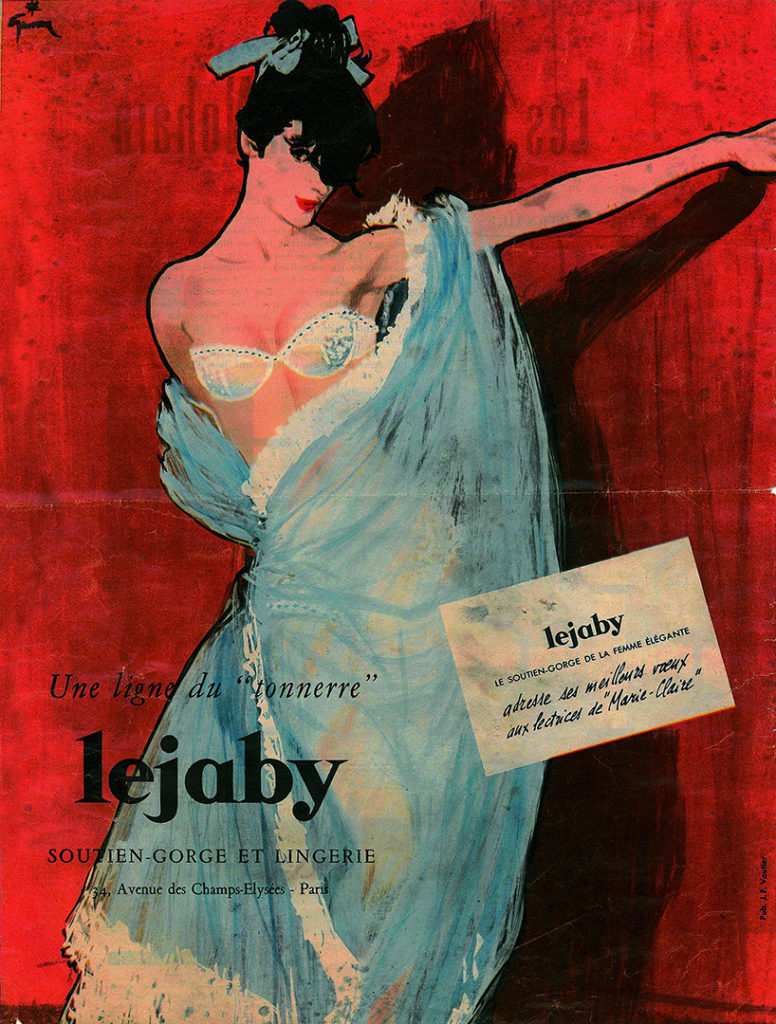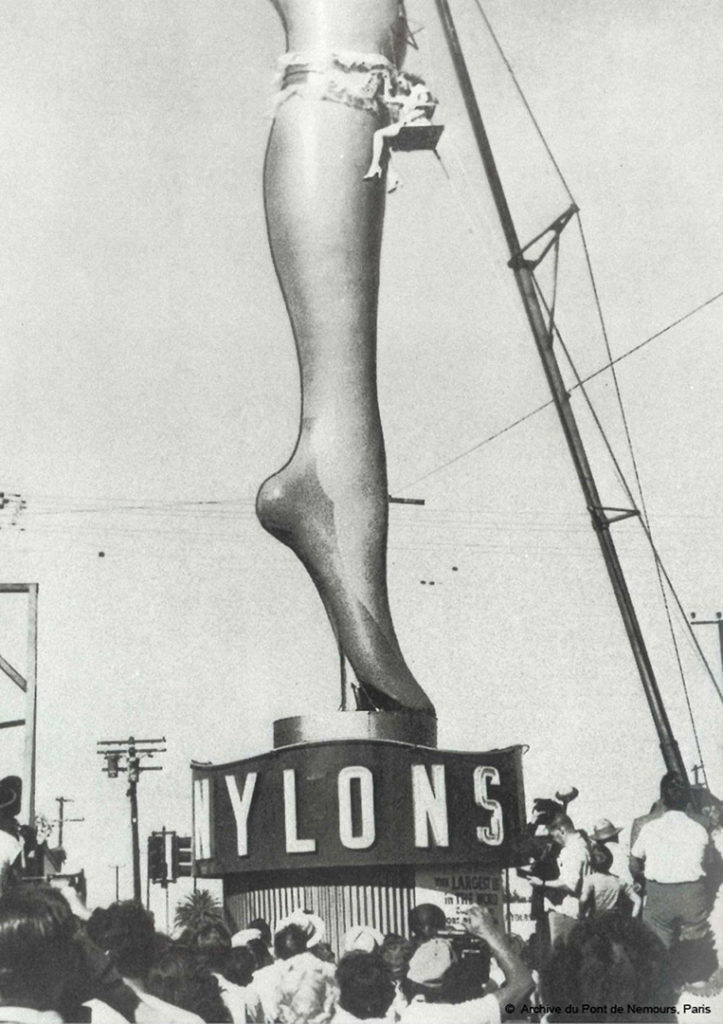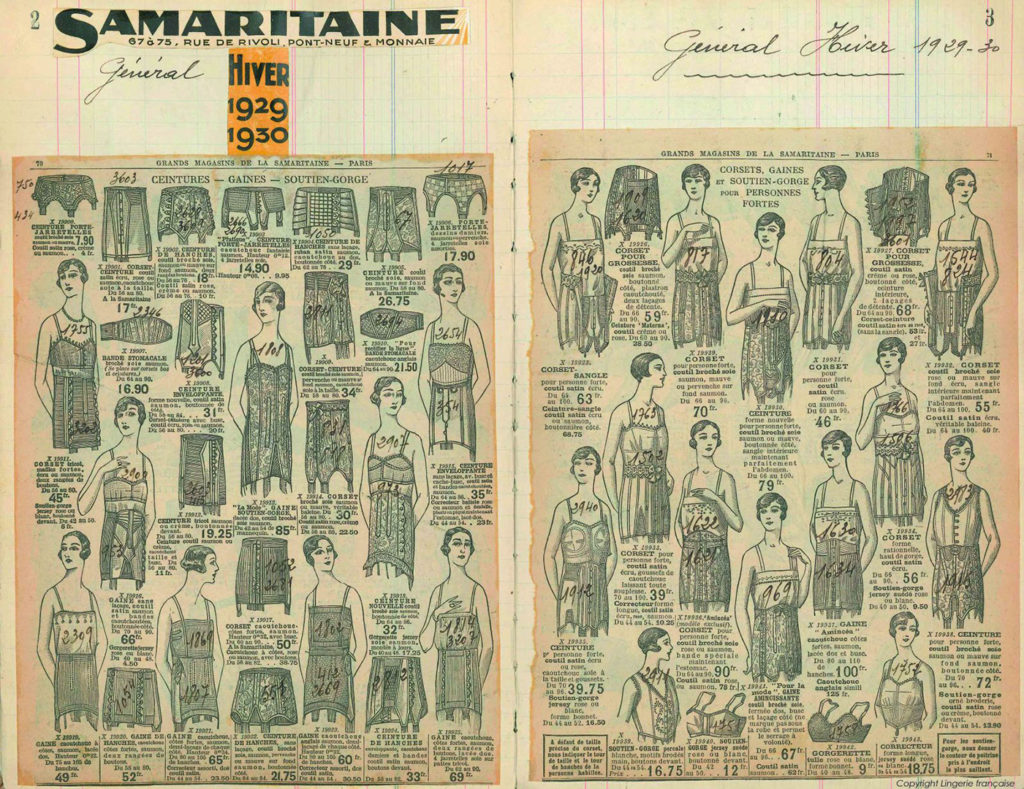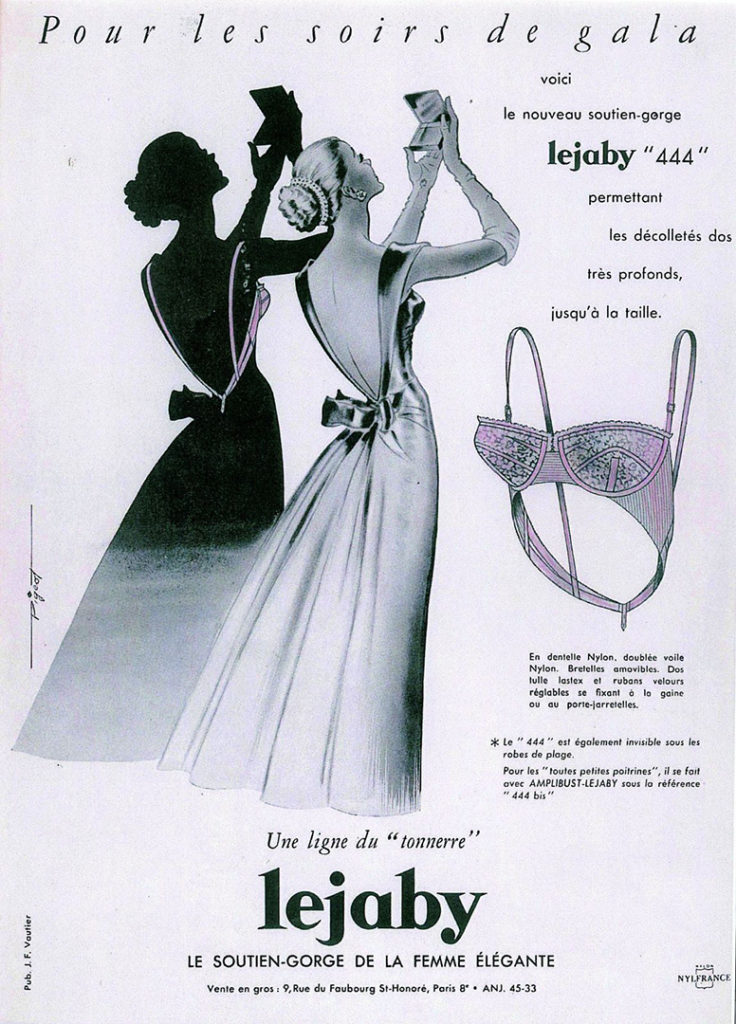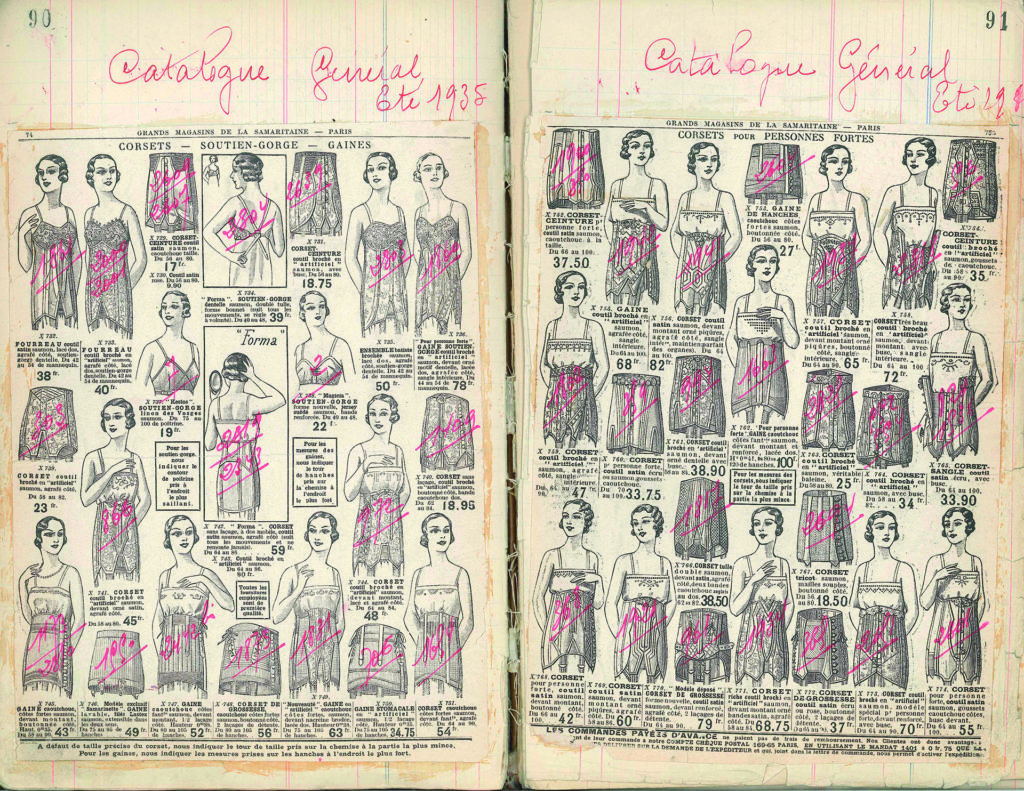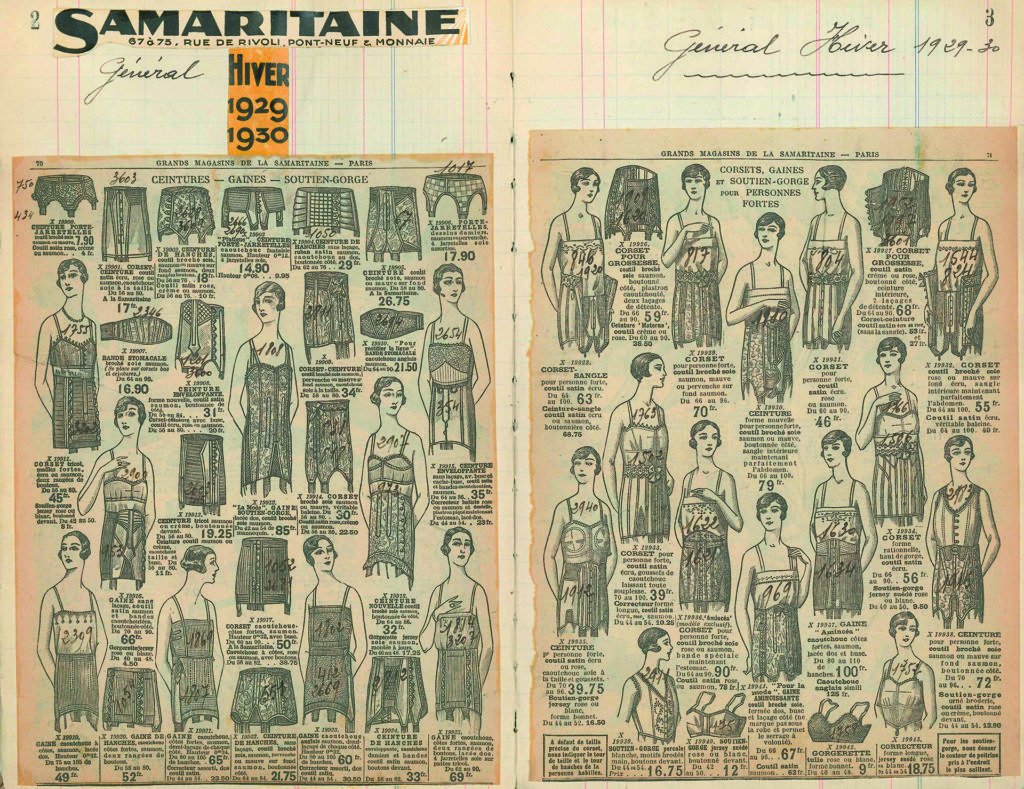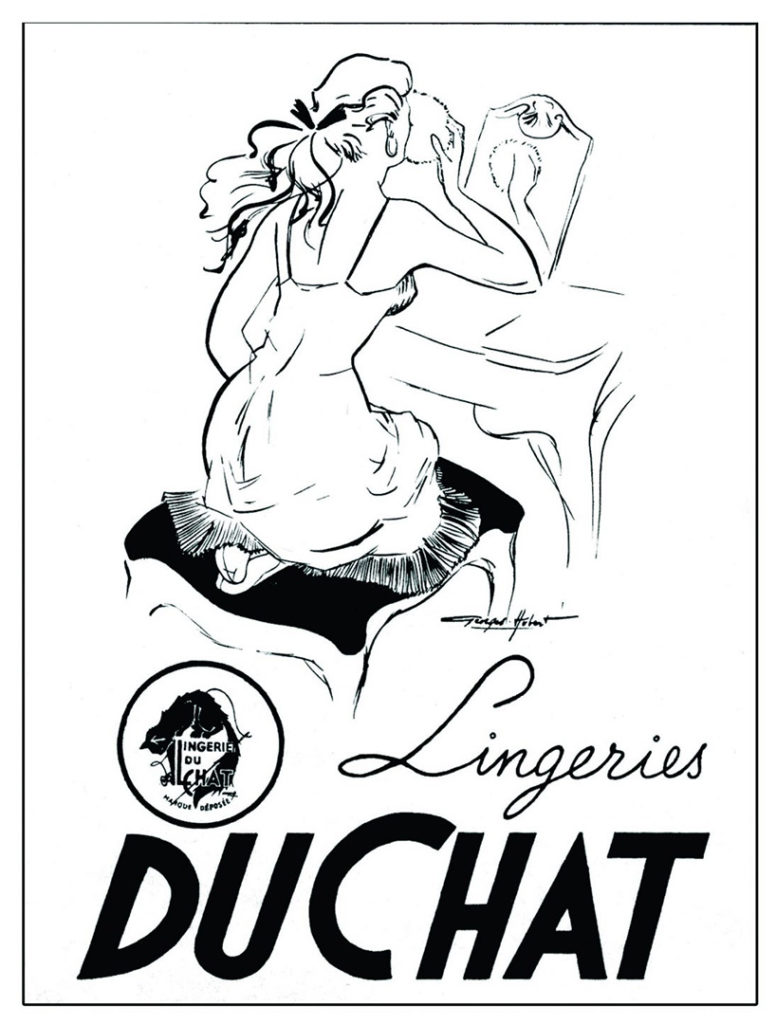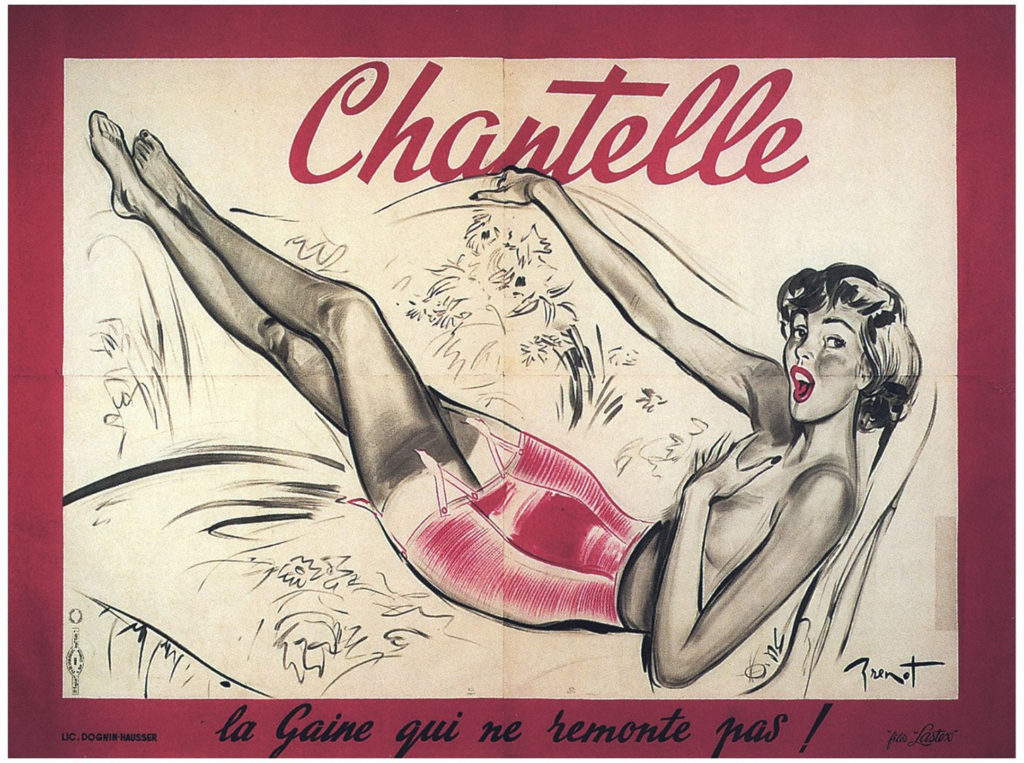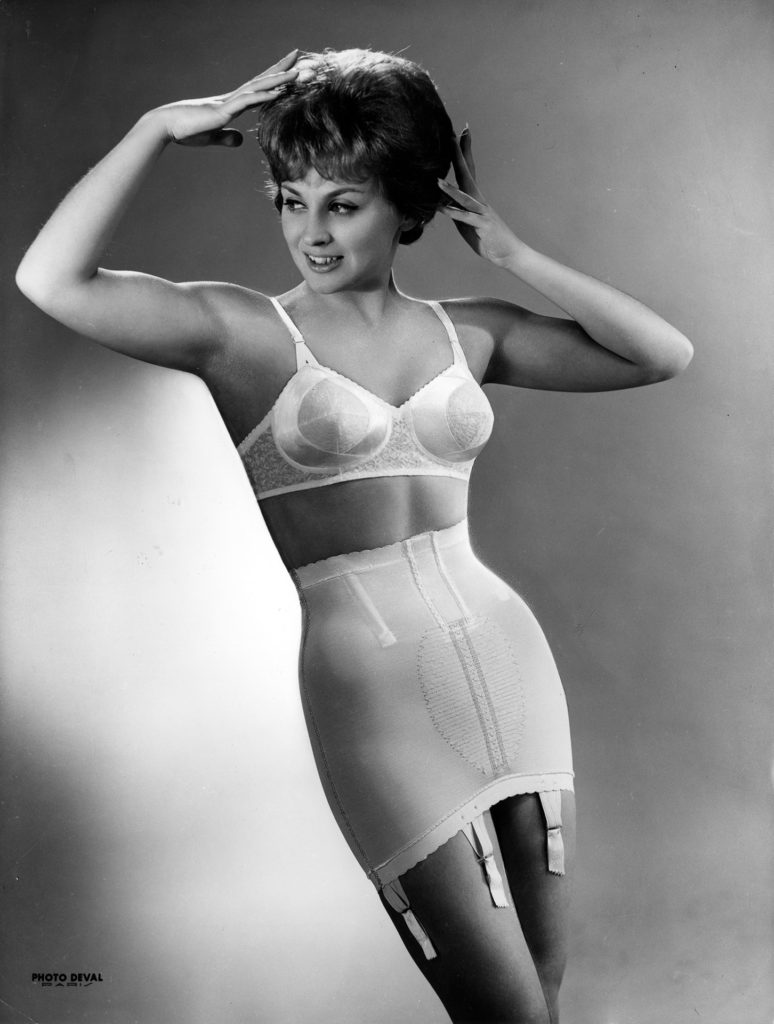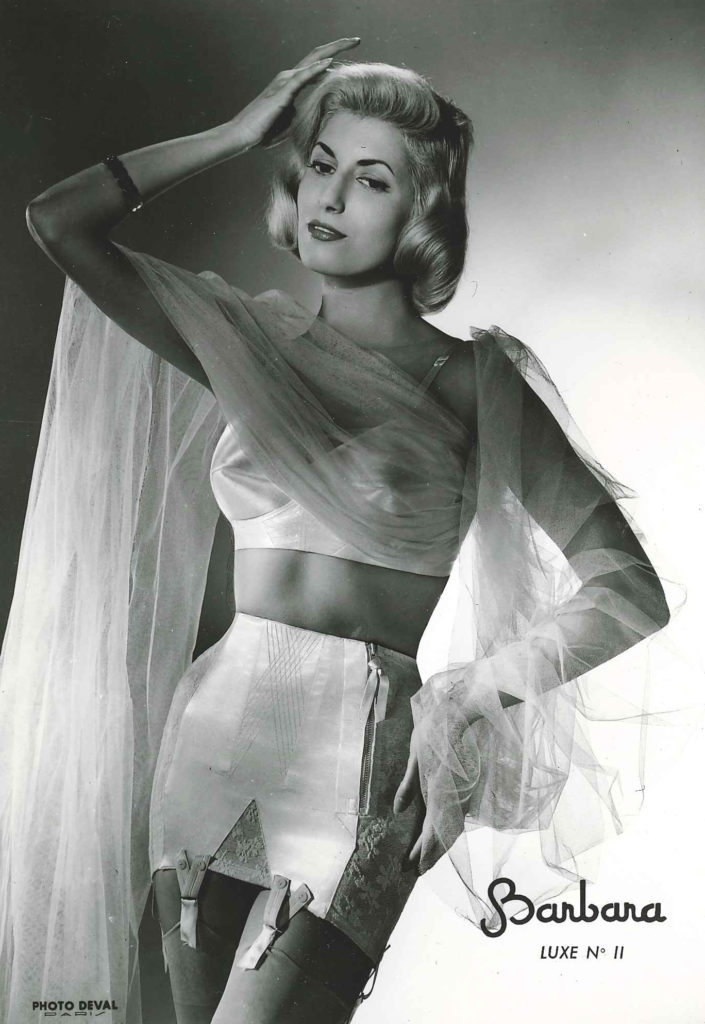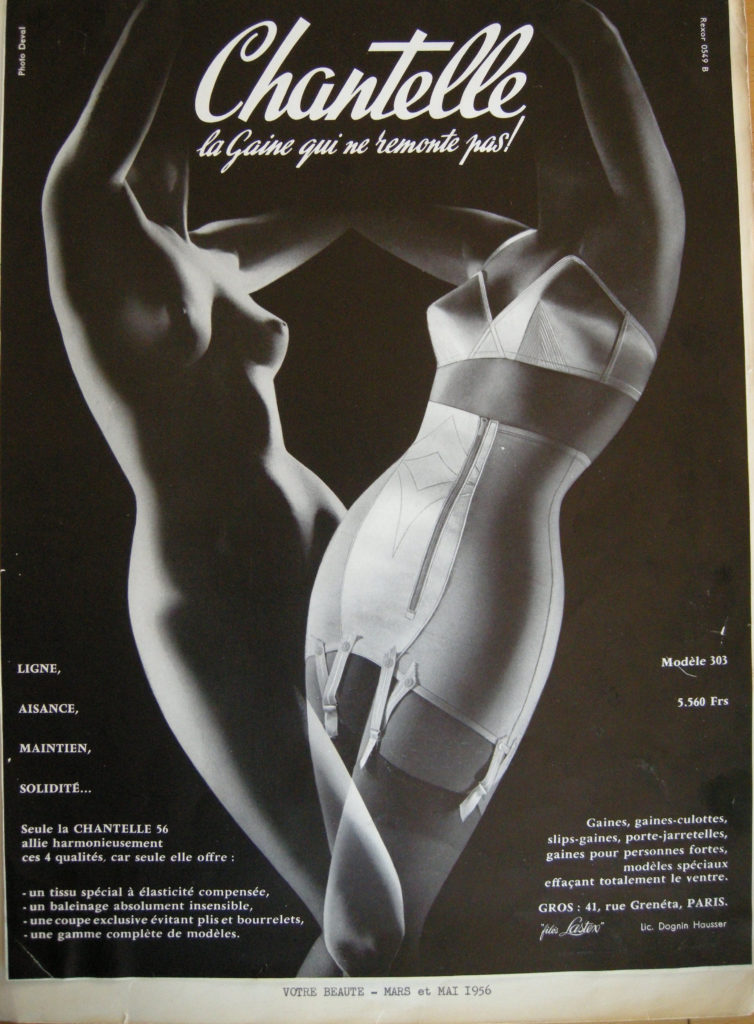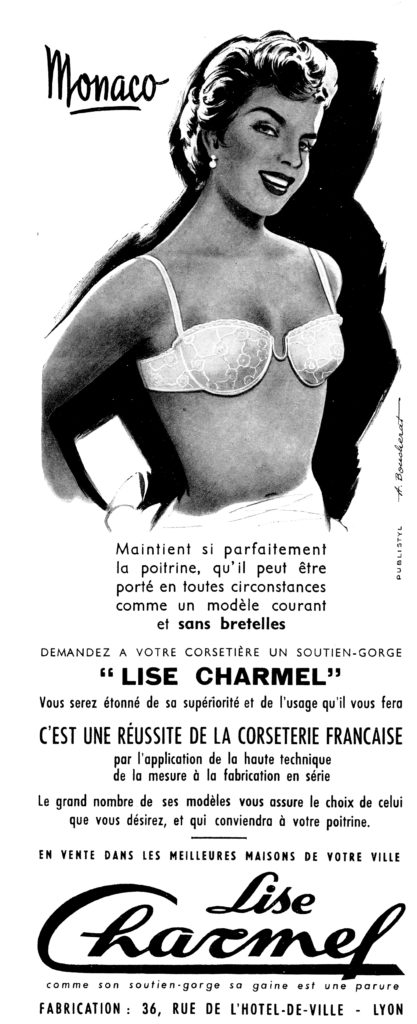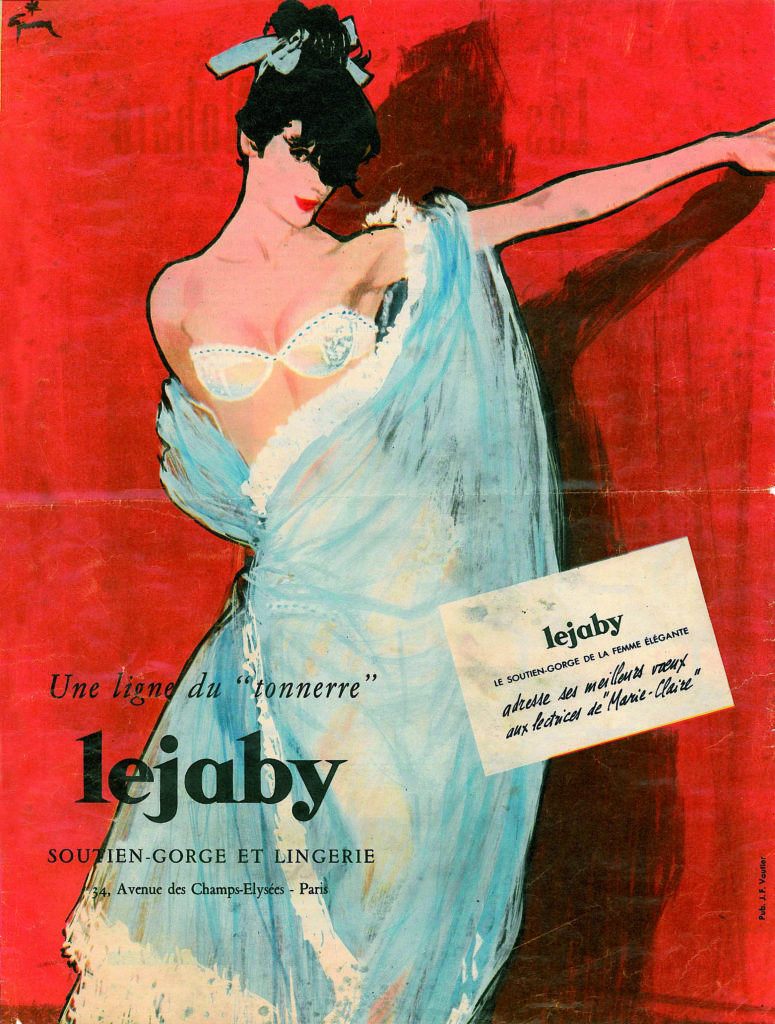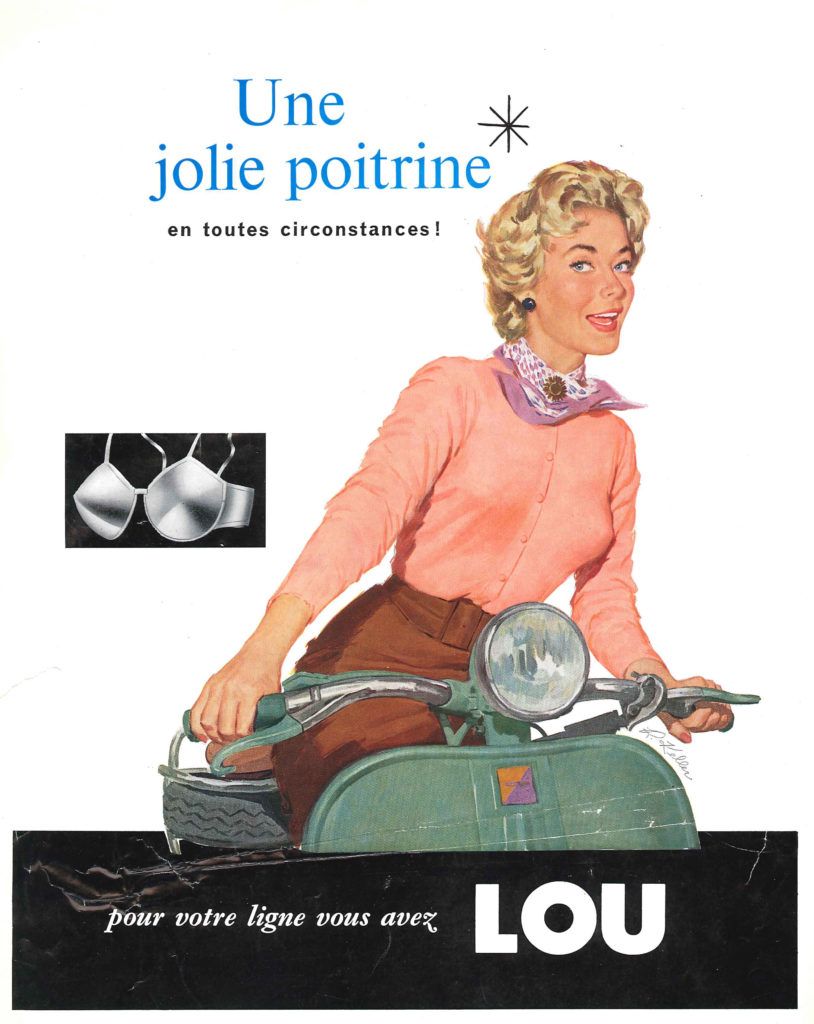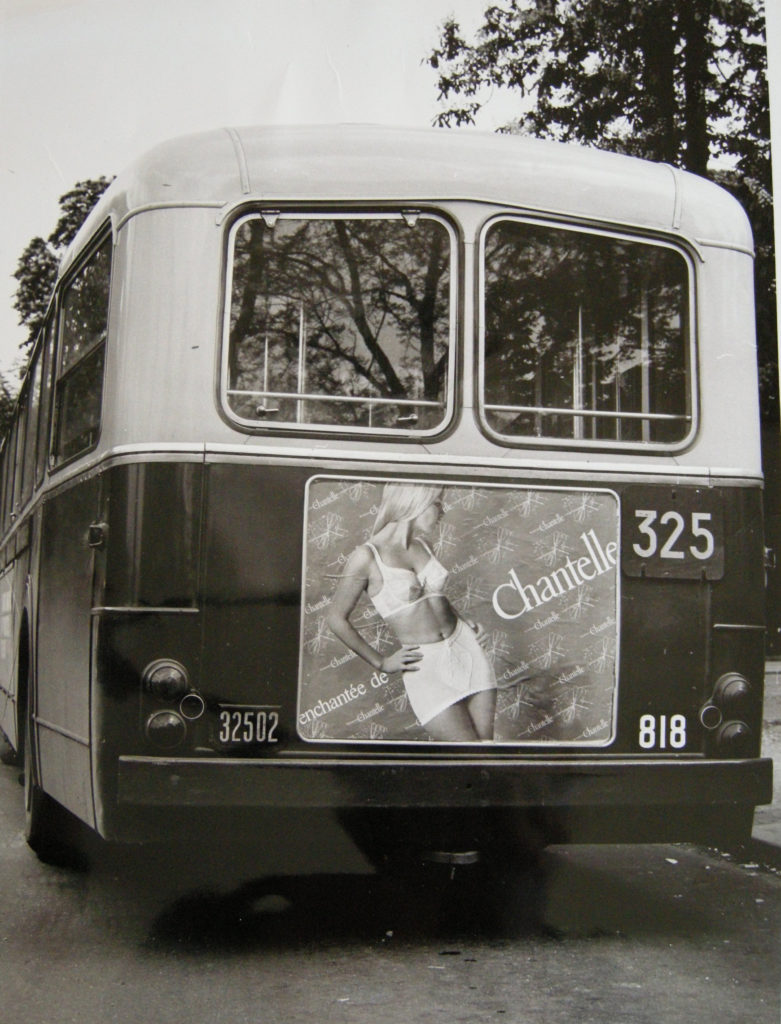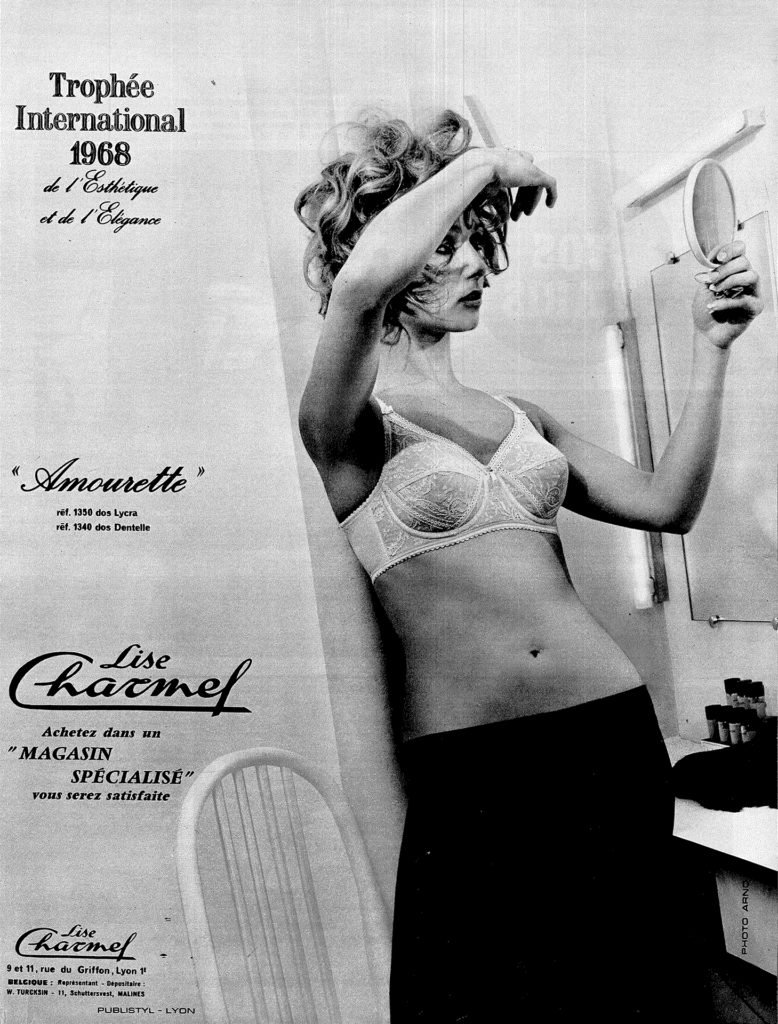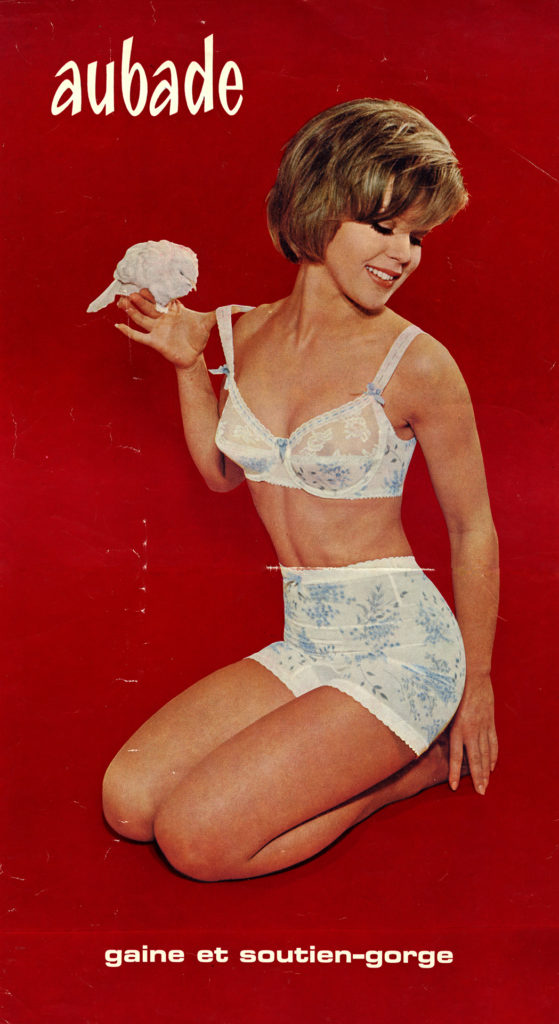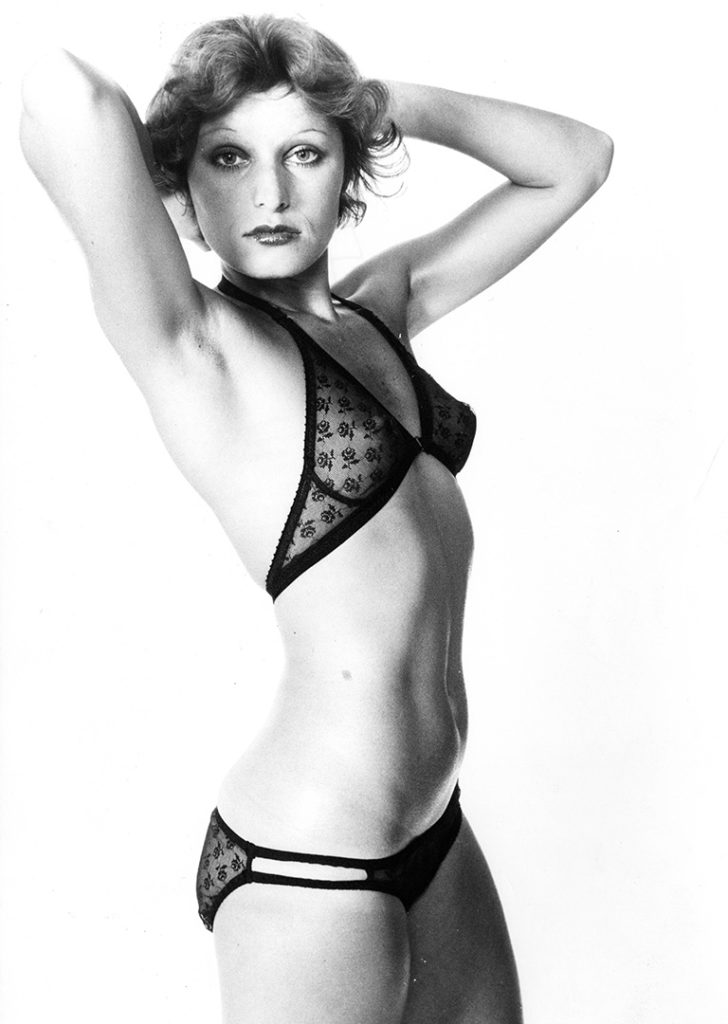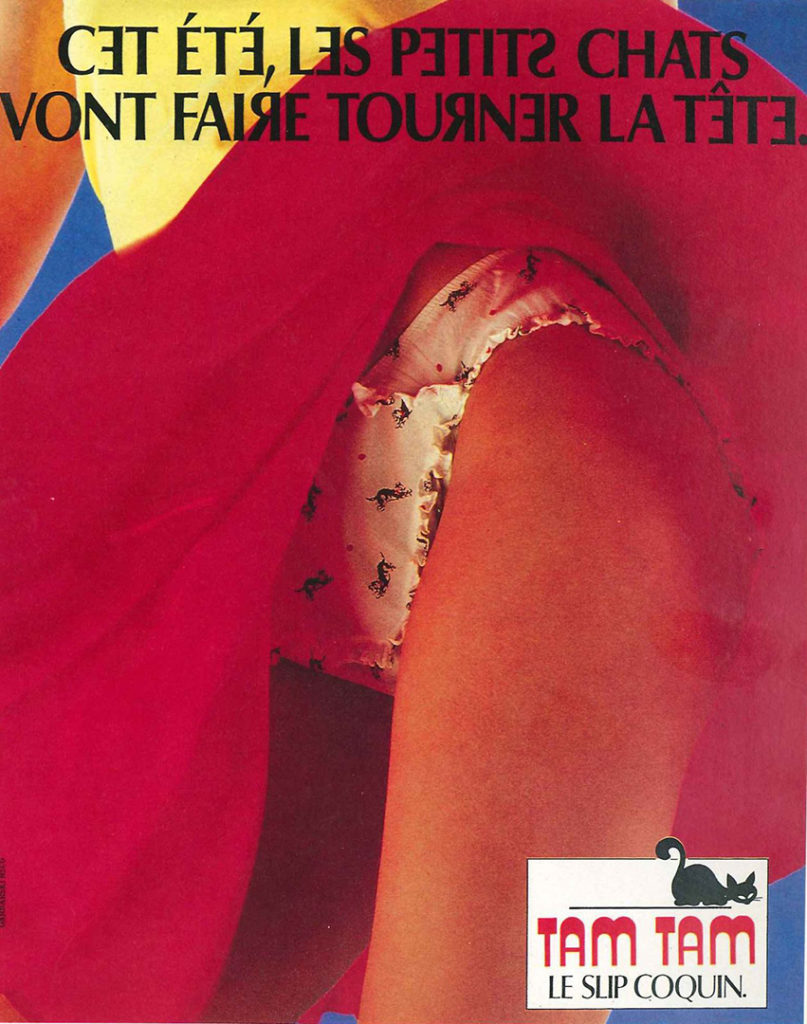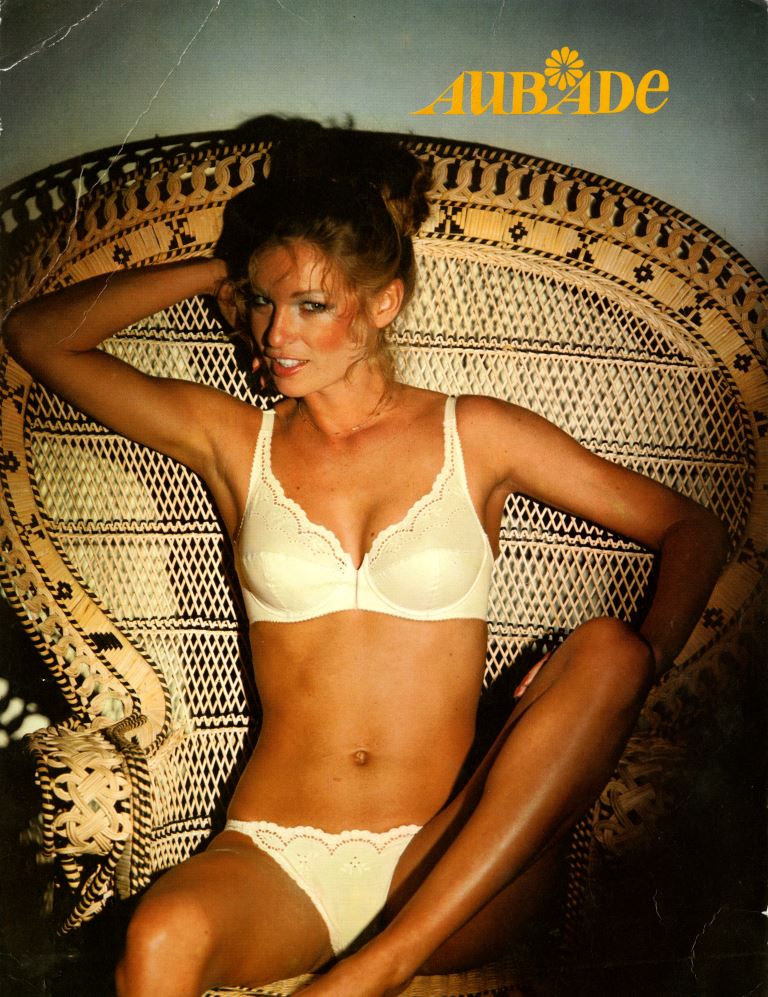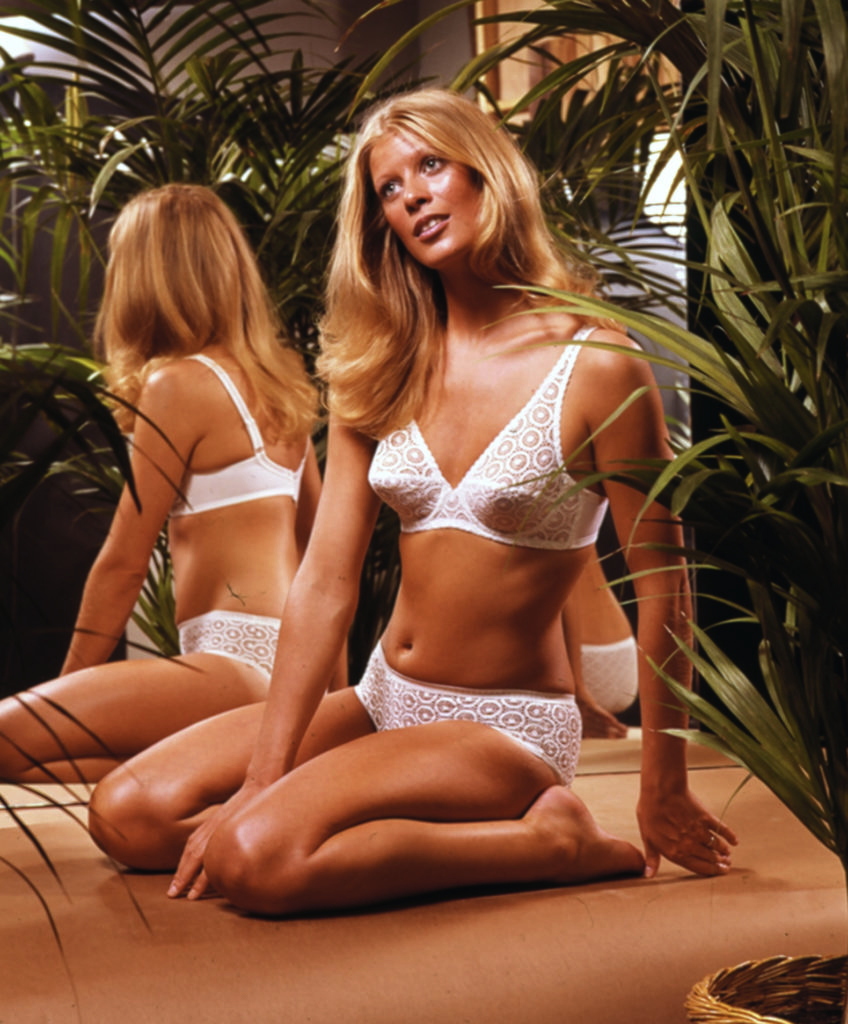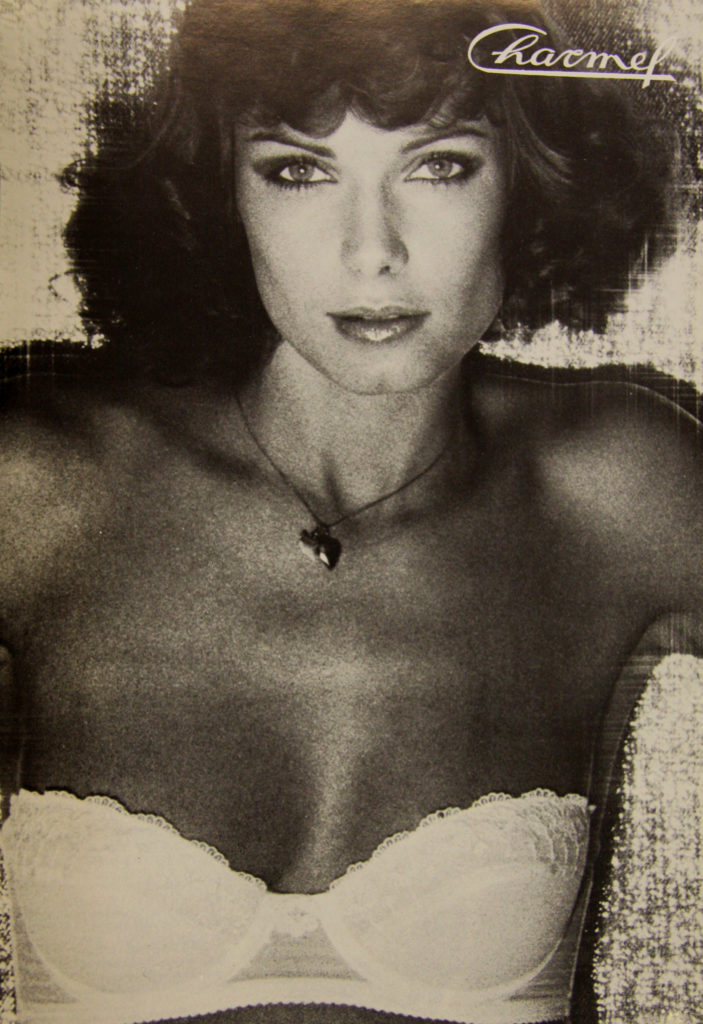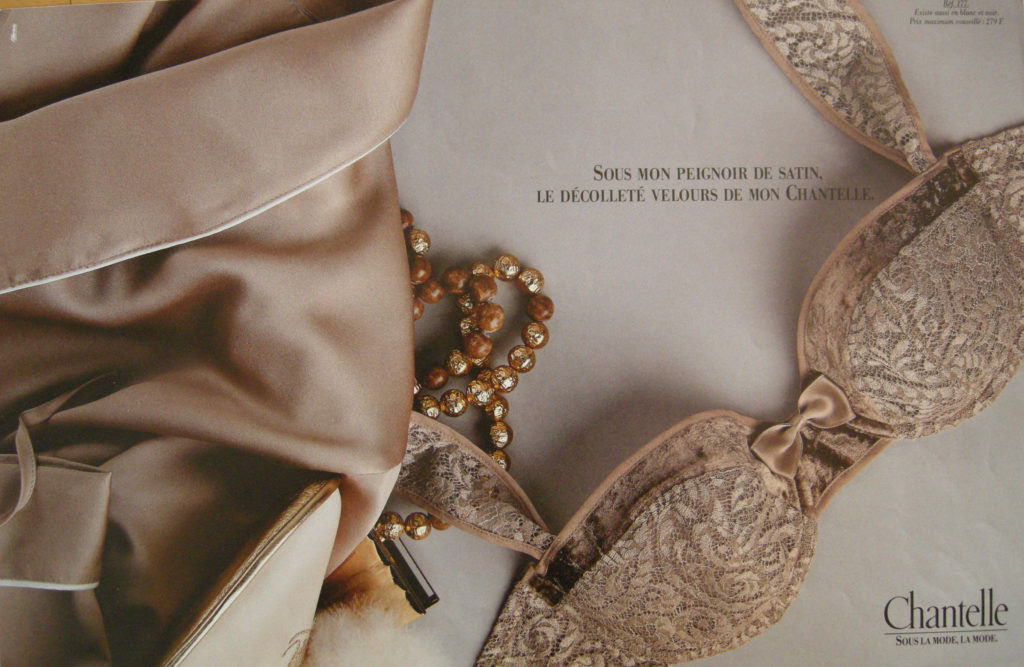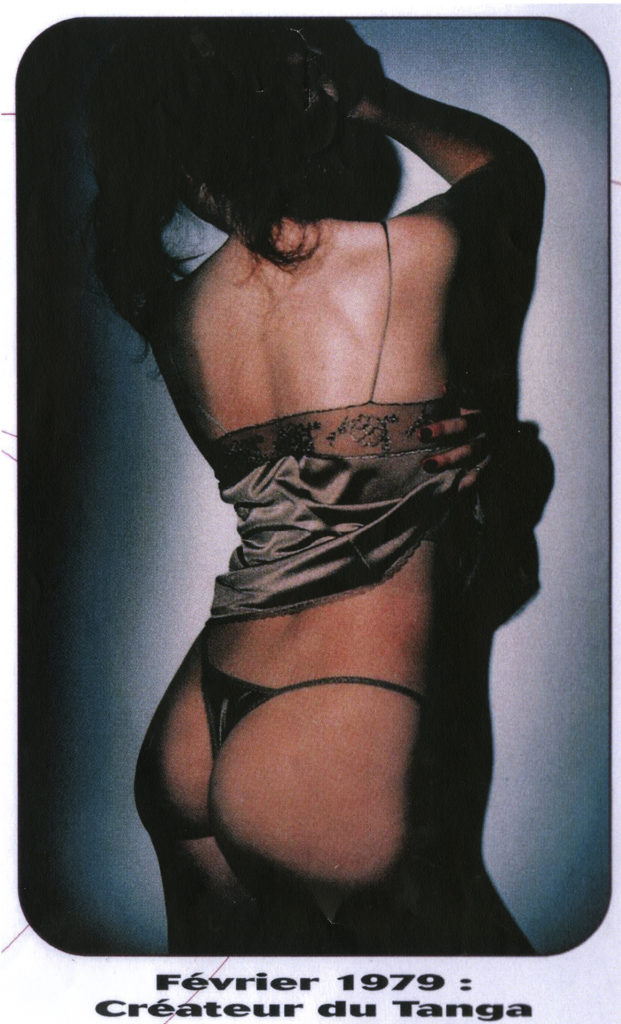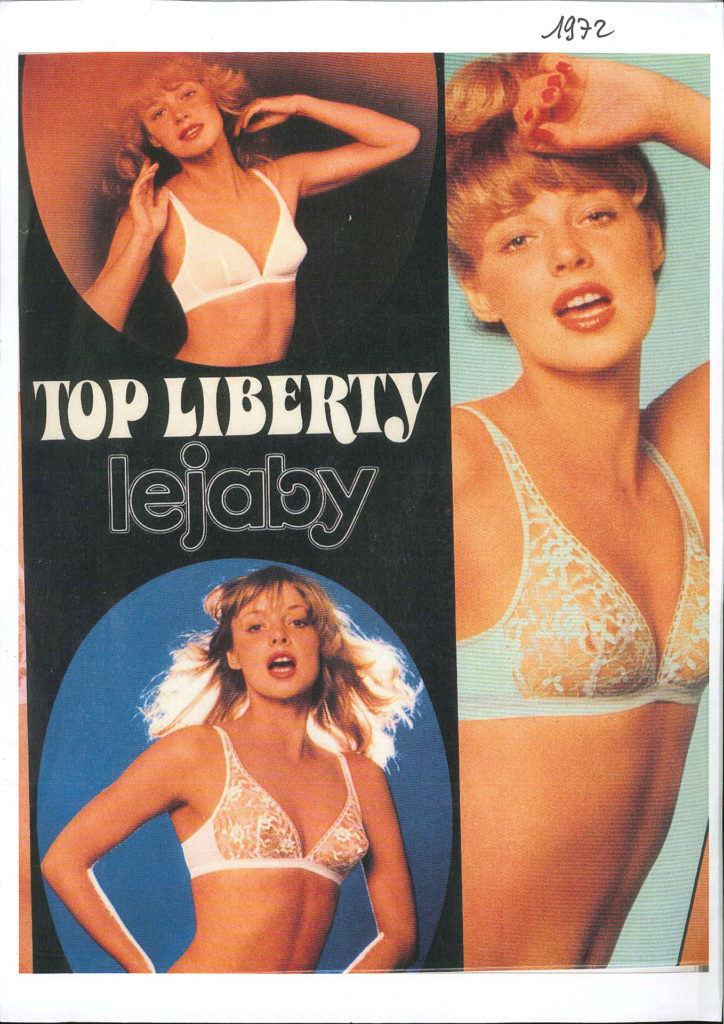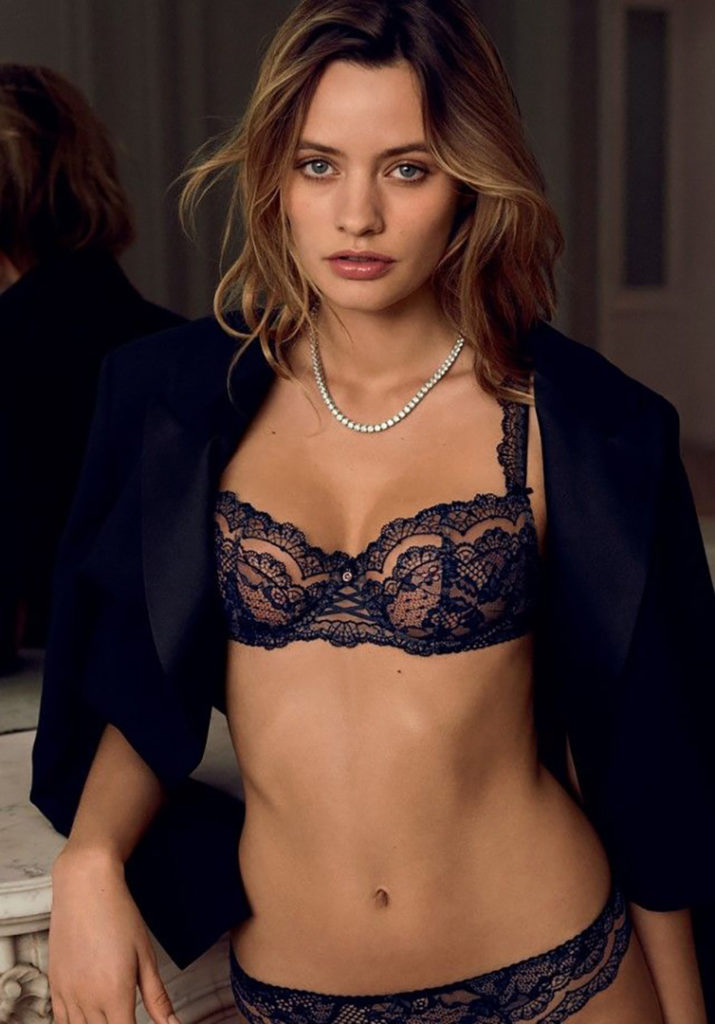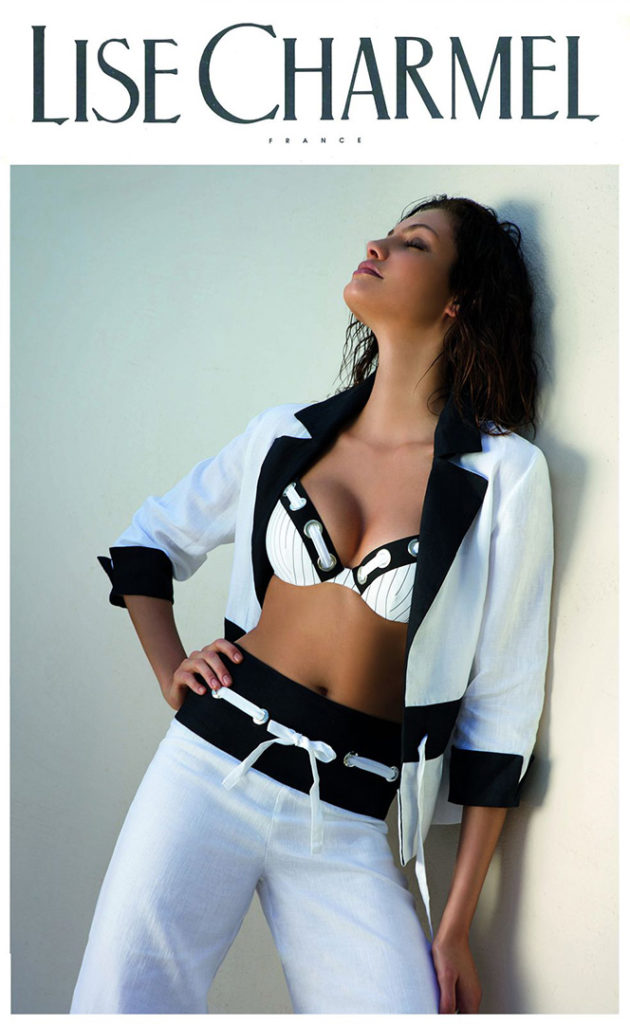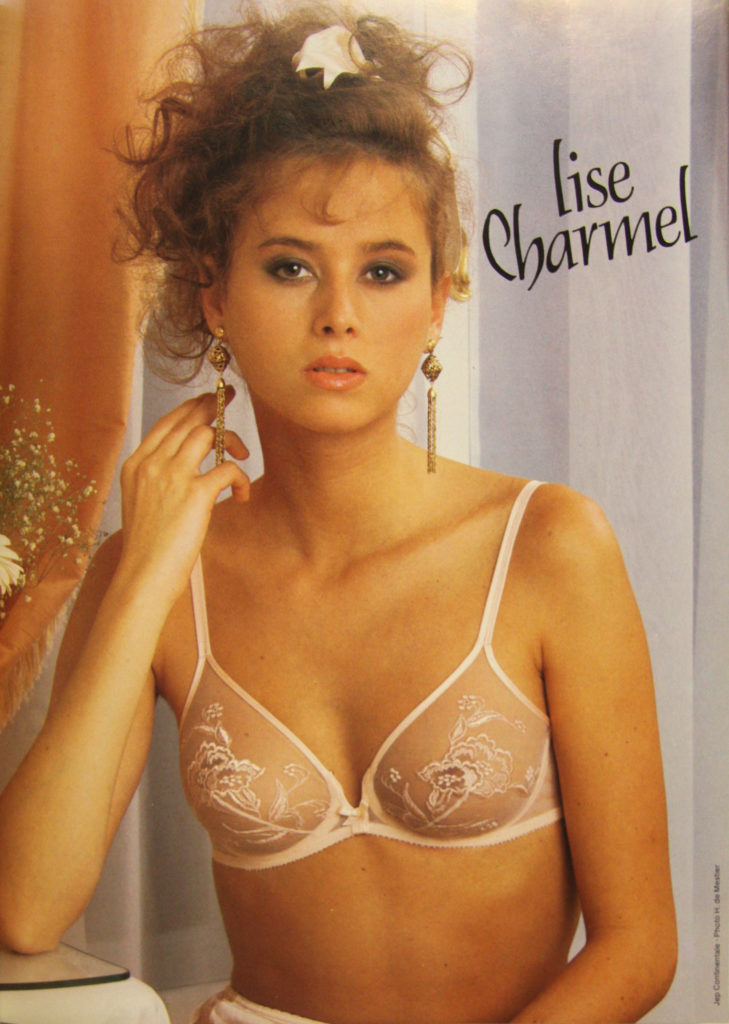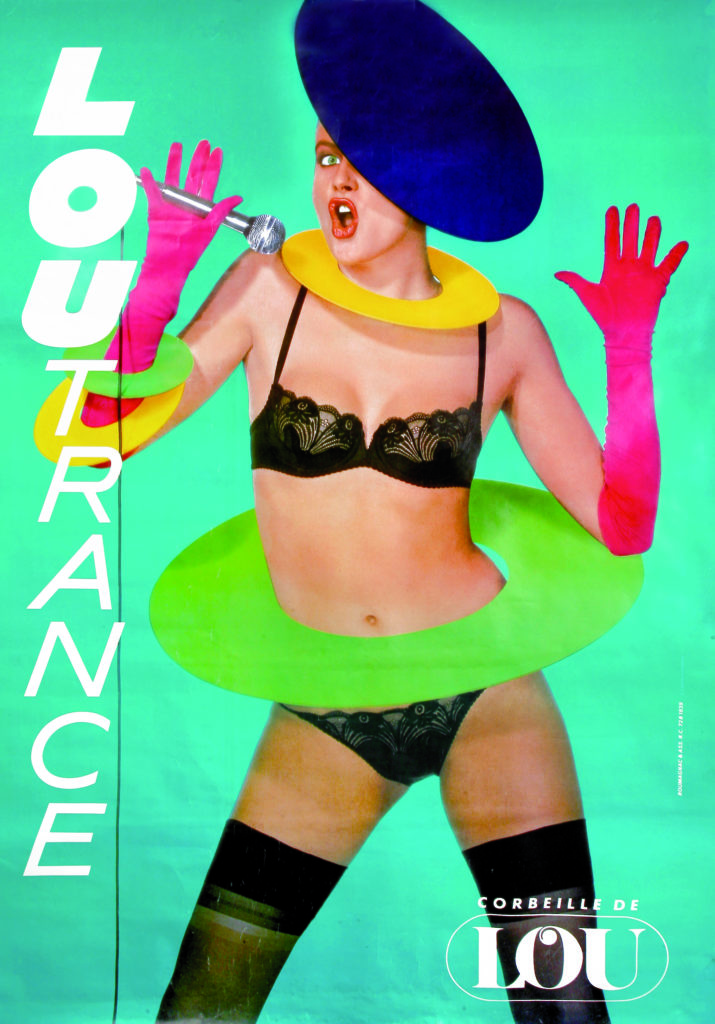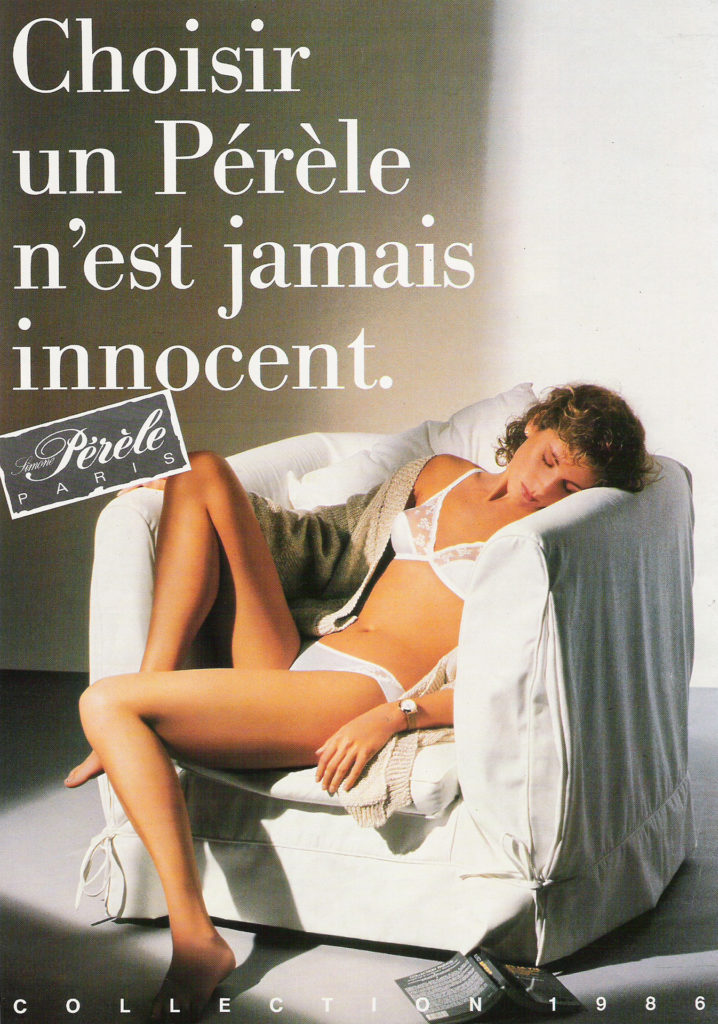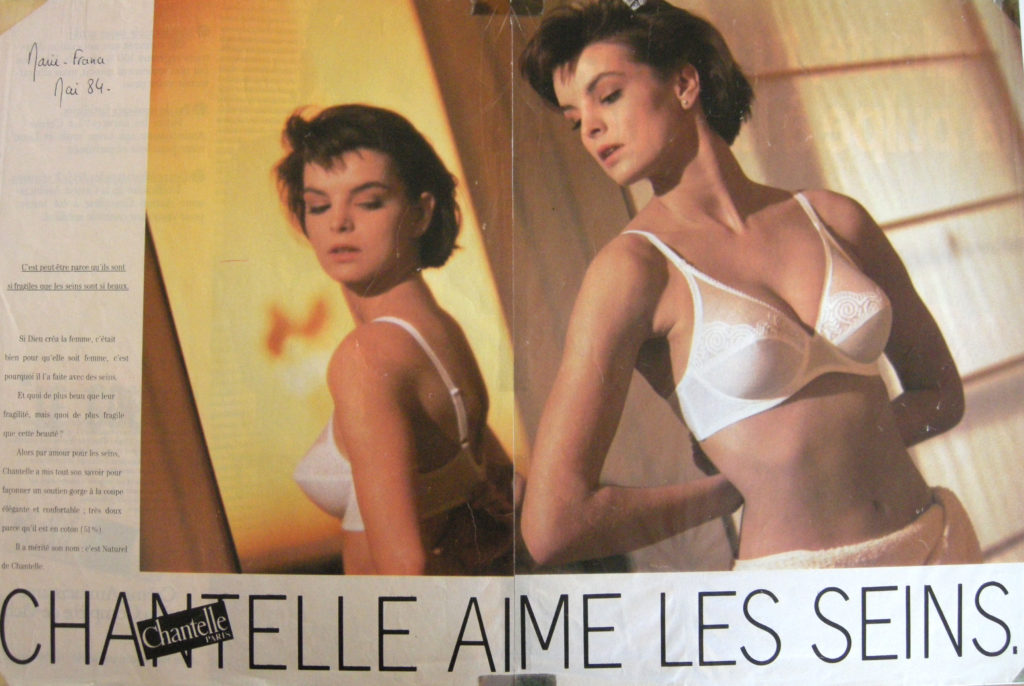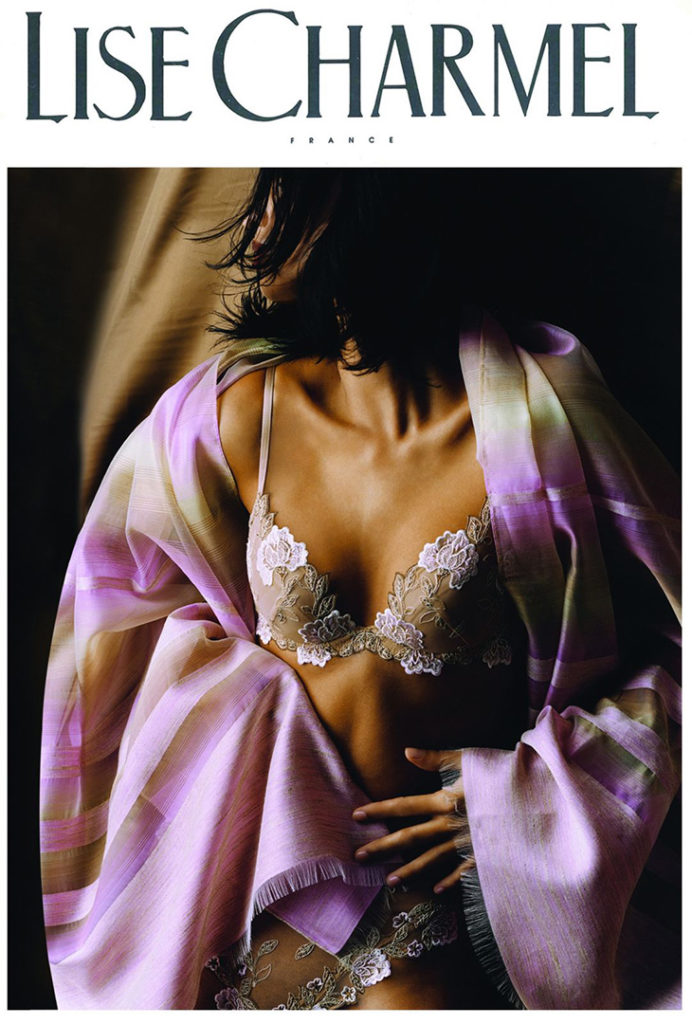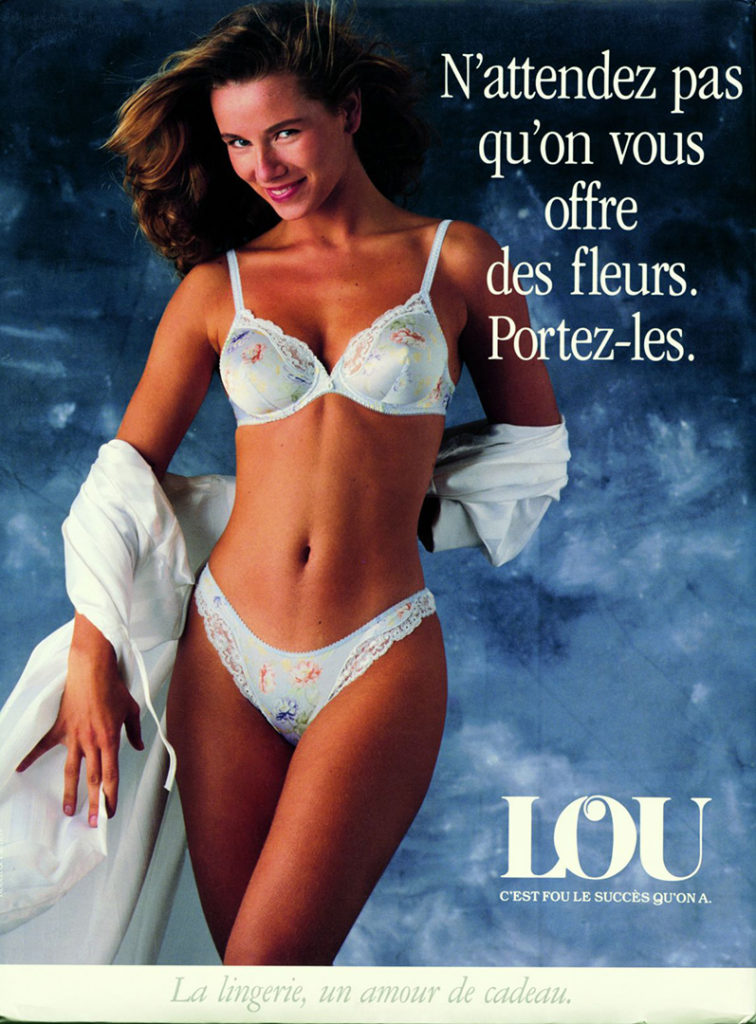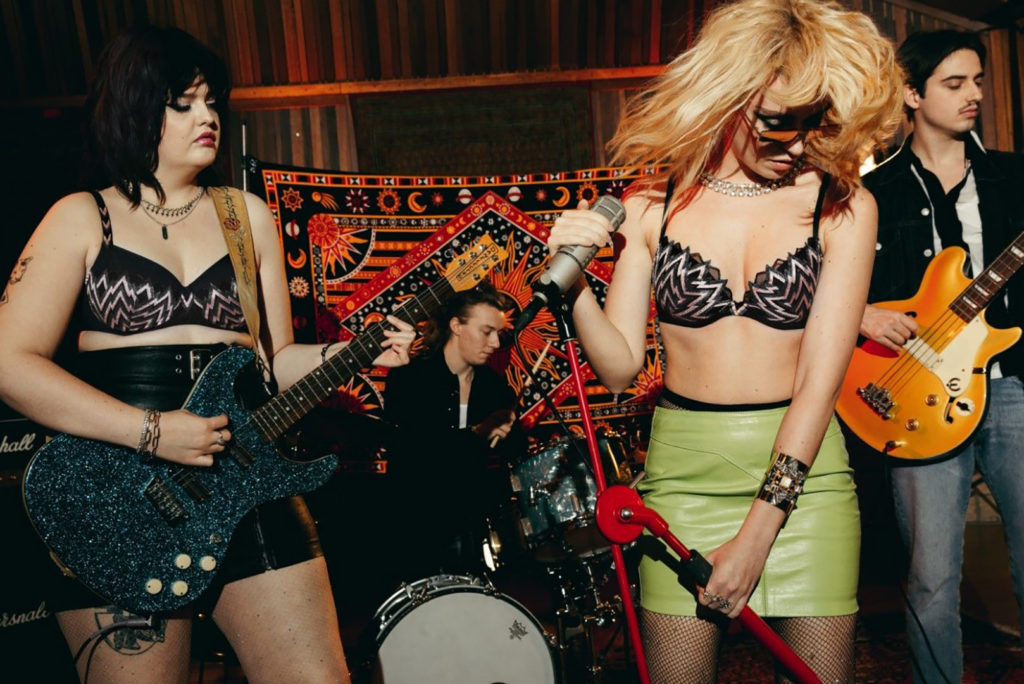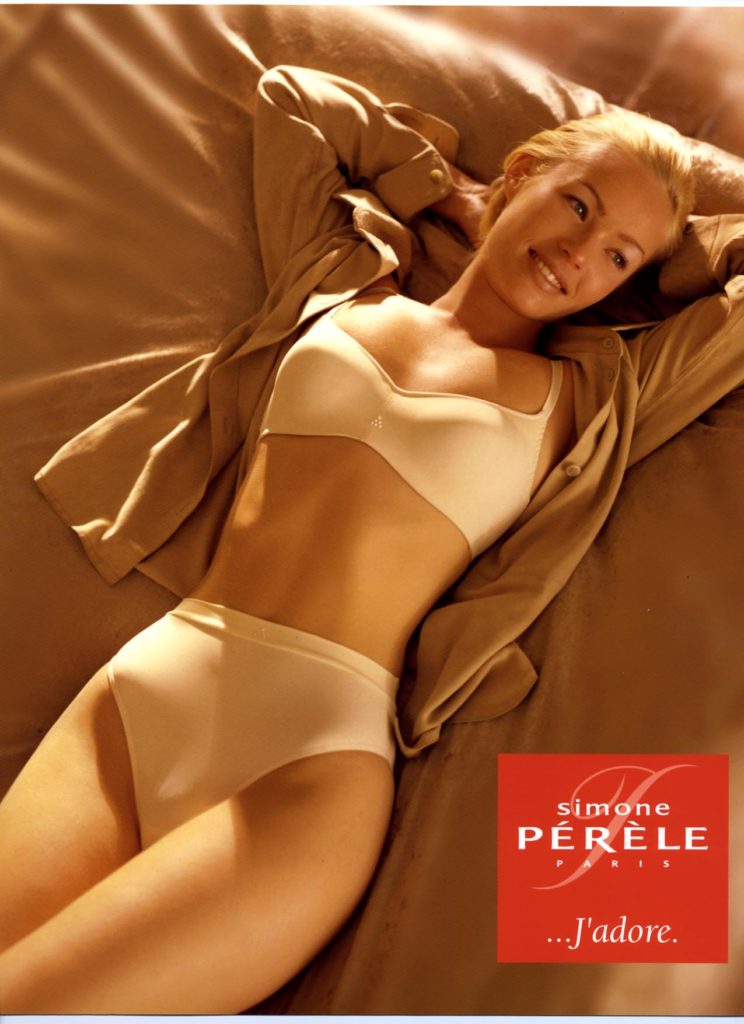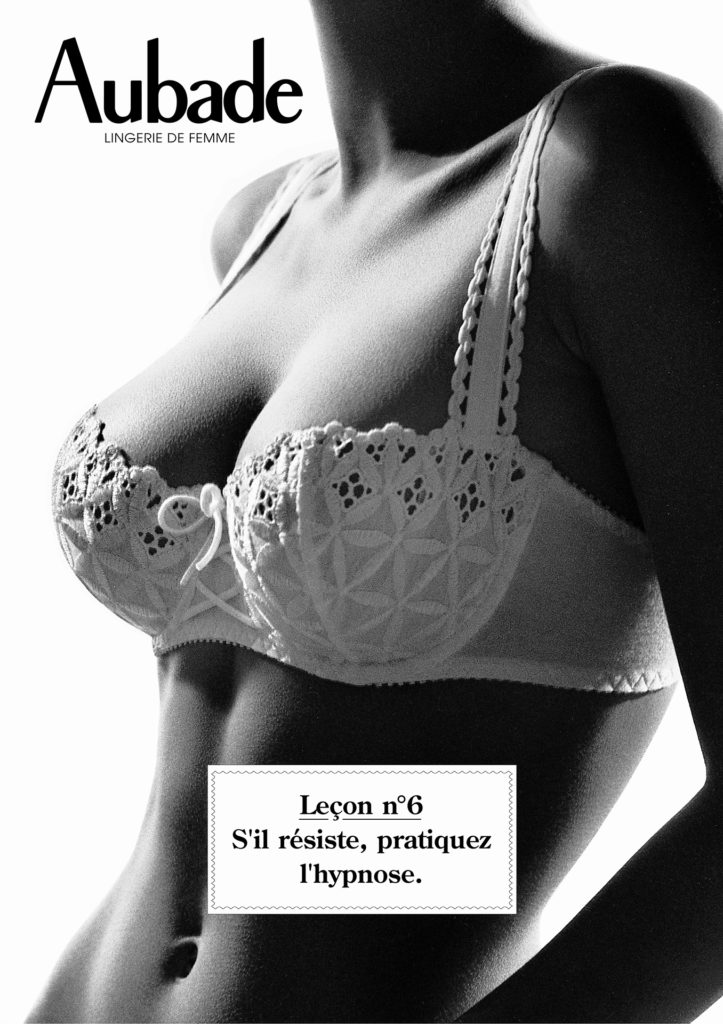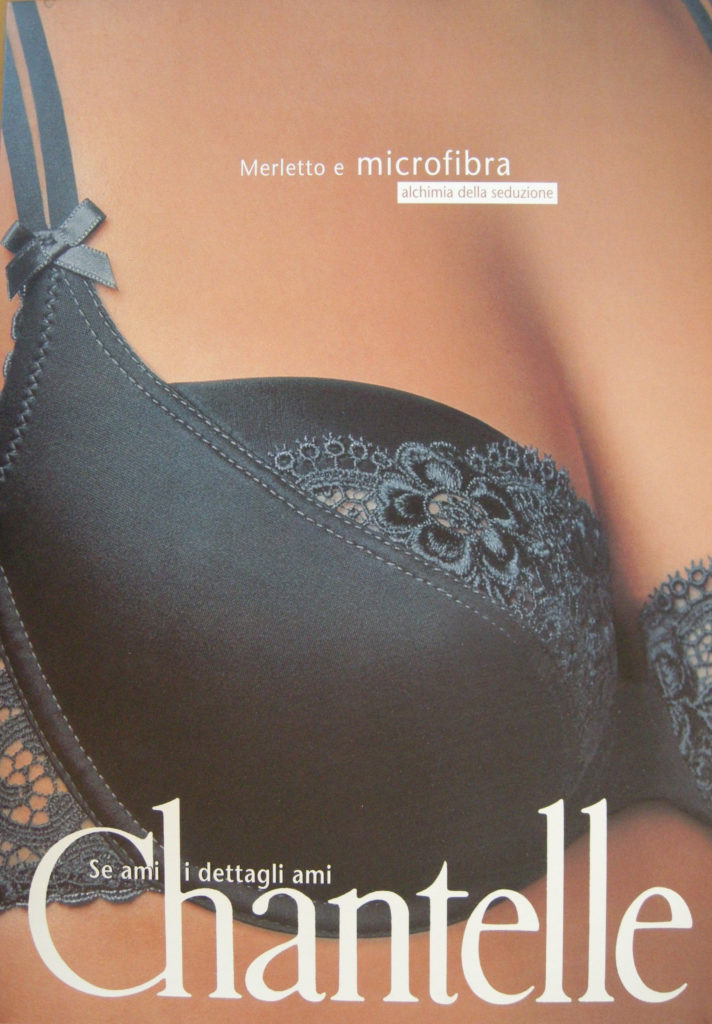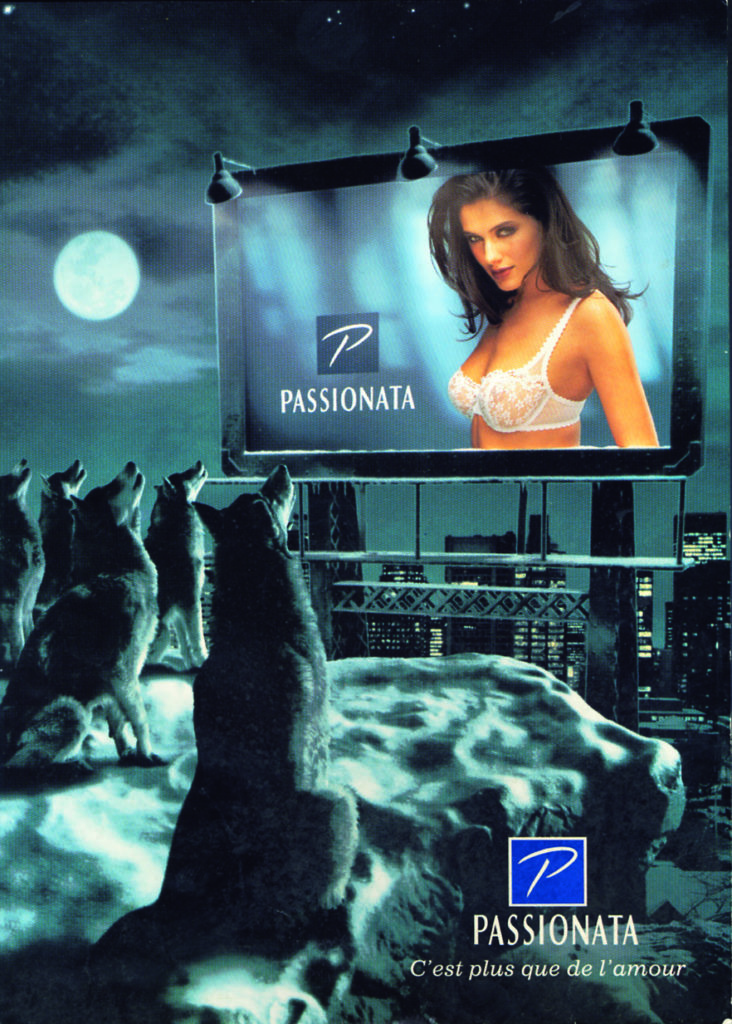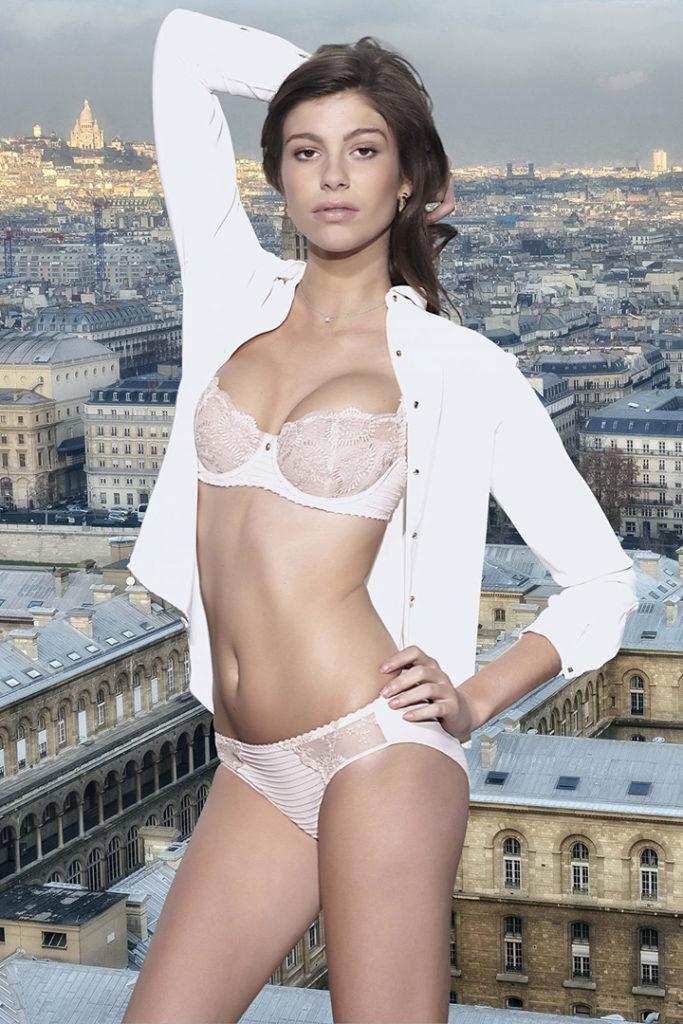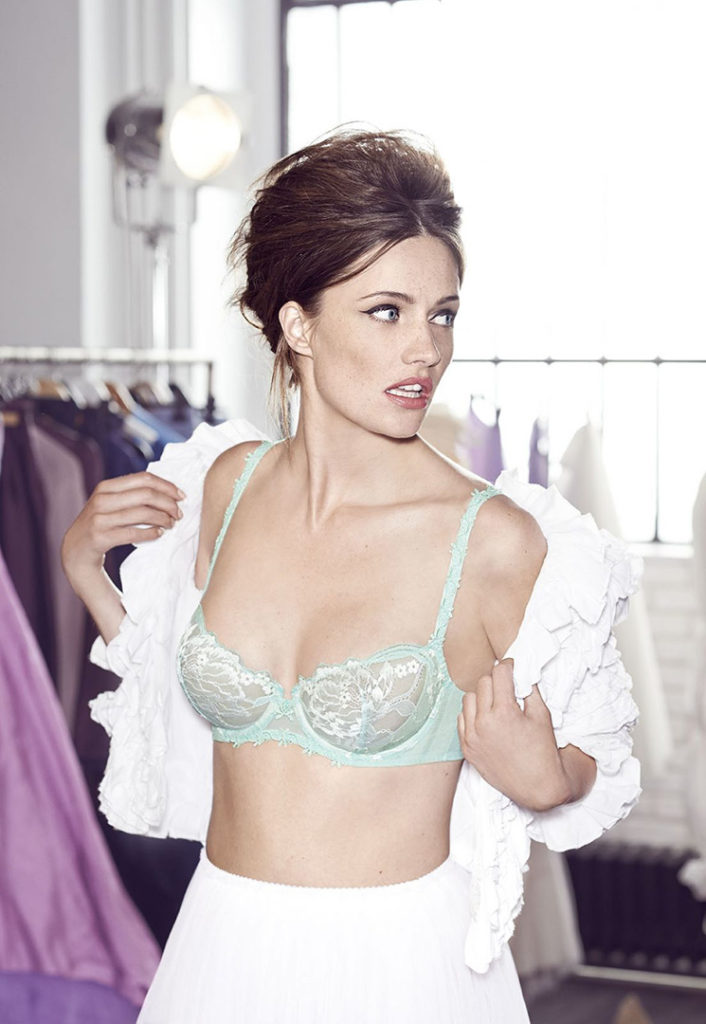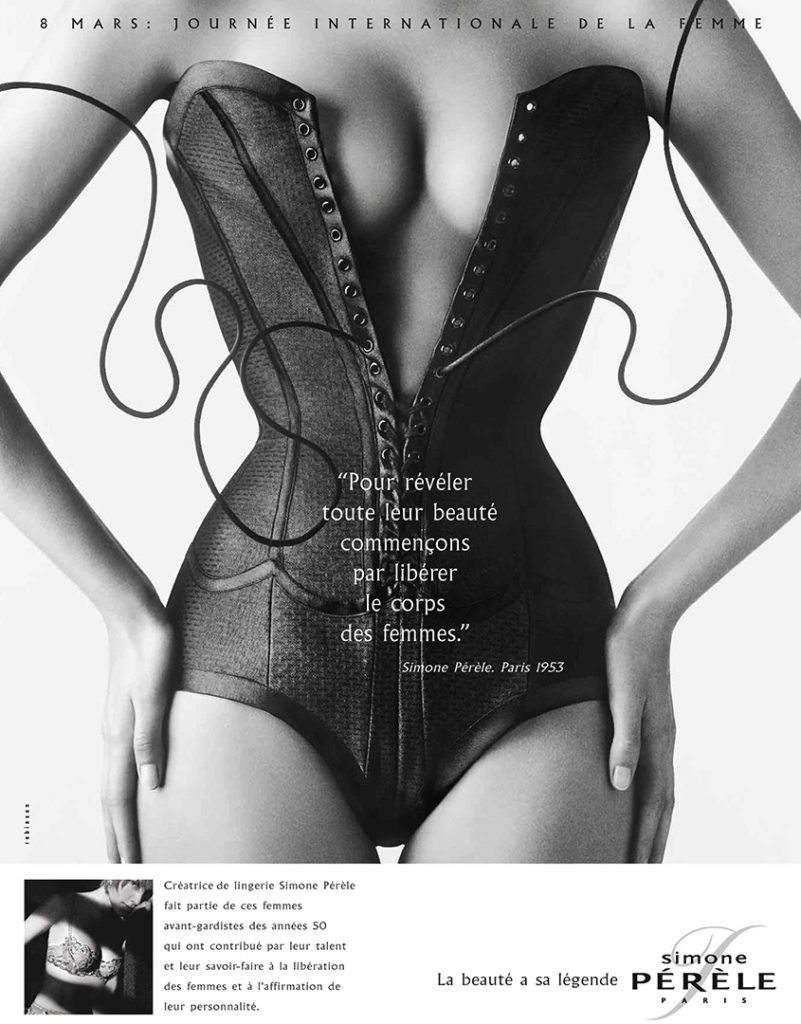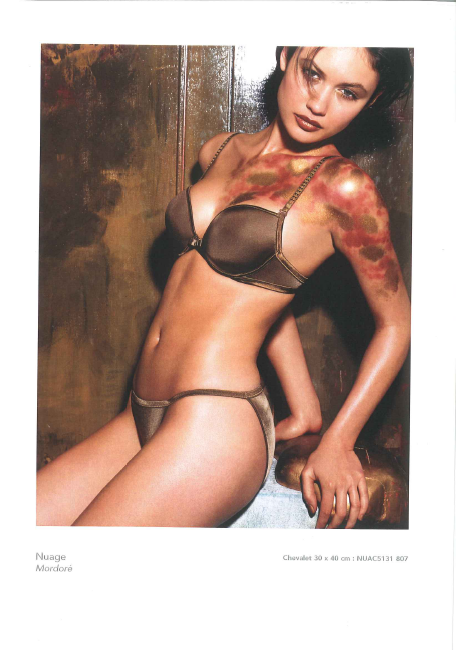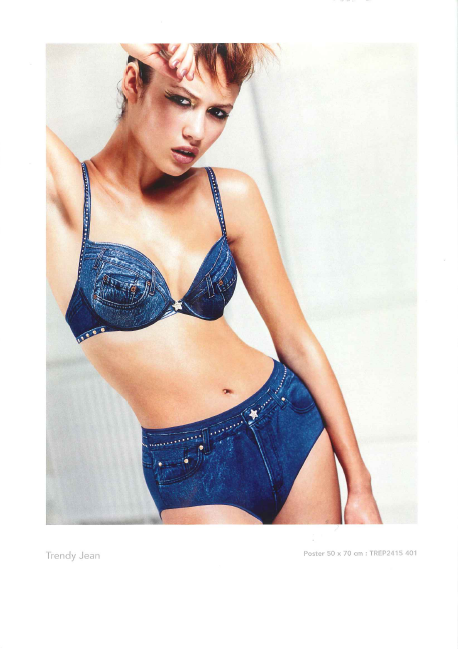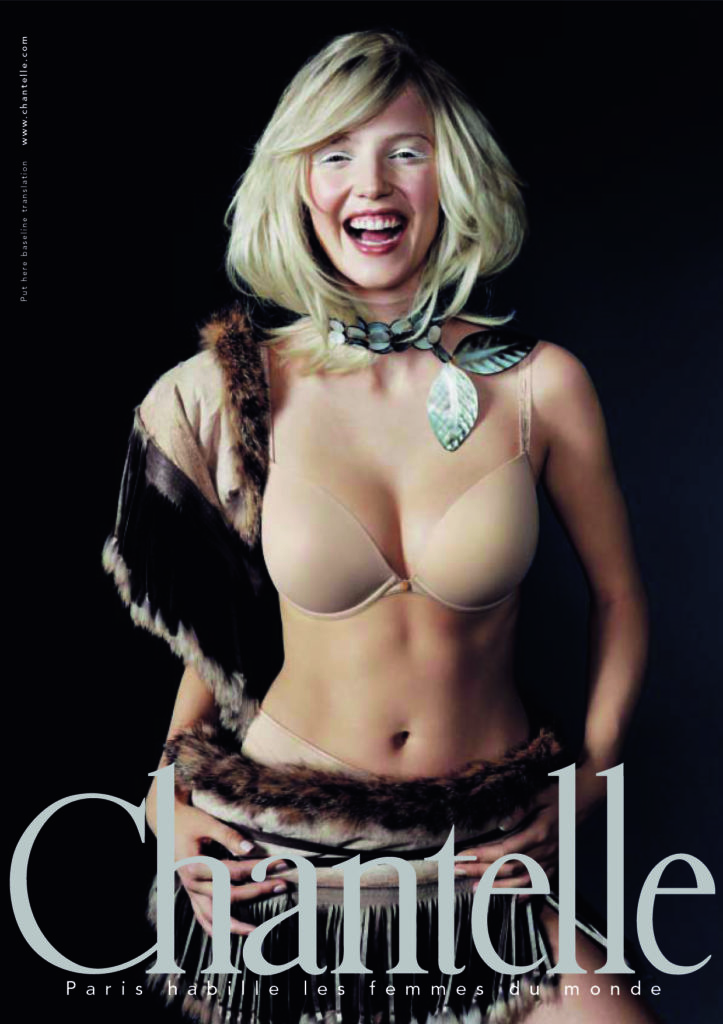Heritage
The “short” history of French Lingerie
The history of French lingerie highlights the evolution of the way women are viewed in each era. It is marked by feminine conquests, industrial visions, innovations, beautiful materials, meticulous craftsmanship, talents, creations, models, audacity, social metamorphoses, know-how, excellence, seduction, elegance, refinement…
1 8 2 0
1 8 8 0
1 9 0 0
1 9 2 0
1 9 3 0
1 9 4 5
1 9 6 0
1 9 7 0
1 9 8 0
1 9 9 0
2 0 0 0
2 0 1 7
2 0 2 0
2 0 2 5
1820 – 1880: The birth of the French corset OR lingerie* industry
The French corset OR lingerie* industry began in the 1820s with the establishment of the first corset factory in Paris. This was a period of technical innovation, sixty-four patents were registered between 1828 and 1848. Important inventions included the instant unlacing process in 1829, the “dos à la paresseuse” (easy back lacing) in 1844, and the first “seamless” corset invented in 1832, a forerunner of the knitted corset. The corset gradually became an essential accessory for all women, whatever their social status.
Under the Second Empire, the French corset had an expanded popularity, encouraged by the growth of department stores and increasing use of the sewing machine. In 1867, eleven million corsets were sold in France, testifying to the mass democratization of this item.
Under crinoline dresses, women’s drawers (a lightweight divided garment) became common. Charles Frederick Worth, an English clothing designer who moved to Paris in 1858, revolutionized fashion and established the concept of haute couture. His maison on rue de la Paix became the symbol of Parisian luxury, attracting Europe’s elite including France’s Empress Eugenie. Paris became the fashion capital of the world and haute couture was a French art par excellence since it combined craftsmanship with avant-garde creativity.
With the zenith of the French corset industry, production increased steadily from 1870 onwards, calling for factories or workrooms with specialized machinery. France enjoyed an almost complete monopoly on this market, exporting corsets around the world, and the “Paris corset” benefitted from an unrivaled international prestige.
1880 – 1900: Health innovations and the birth of the brassiere
In parallel to the success of the traditional corset, the first health and comfort-oriented alternatives emerged. In 1884, Louis Neyron founded the Rasurel company to develop “healthy” undergarments designed by Dr. Rasurel. These garments, made from wool mixed with peat fibers, revolutionized the concept of lingerie by allowing women to practice sports.
François Auguste Gamichon developed an elasticized knit mixed with vulcanized rubber, an innovation that won awards at numerous World’s Fairs. He associated with his nephew, Paul-Maurice Kretz in 1898, and their products won gold and silver medals at various Paris, London and Milan World’s Fairs. Their elastic corsets, garter belts and later, their famous “brassieres”, were among the most remarkable innovations. In 1949 Gamichon’s grandson, Claude, created the Chantelle brand. Meanwhile, Dr. Bernard created a company that was renamed Aubade decades later.
Herminie Cadolle invented the modern brassiere and presented it at the 1889 Paris World’s Fair when the Eiffel Tower also made its debut. This early feminist, a corsetry worker, staunch member of the Paris Commune and close friend of Louise Michel, had the idea of cutting the corset in half to free the body and then added an underwire. She officially patented this “corset-brassiere” on July 16, 1898.
These creations reflected a growing awareness of the need for flexibility and hygiene, freeing women’s breasts from the tightness of the full-length corset while giving them unprecedented freedom of movement and the ability to practice sports.
1900-1920: The Belle Époque and its new silhouettes
At the turn of the 20th century, the corset experienced its last hours of glory under the influence of Art Nouveau. Fashion imposed the S-curve silhouette by twisting the body to create a wasp waist while projecting the bust forward and thrusting the hips backwards. This undulating, vegetation-inspired aesthetic marked the decorative height of the corset’s reign.
But fashion quickly changed and by 1905, a new “Empire” silhouette emerged. Couture designer Paul Poiret’s dresses had no corsets but instead a wide-boned waistband sewn to the inside lining. His glamorous, colorful, daring clothes offered women a new option with a straighter line. To correspond with this new silhouette, the corset was modified: gradually being dropped below the bust and held in place by the pressure of a chemise pulled between the shoulders and corset. This makeshift solution was soon replaced by corset covers that became support brassieres (the word in English was eventually shortened to “bra”) or else brassieres with shoulder straps that were laced in back and buttoned in front.
The term “soutien-gorge” (brassiere) appeared in 1904 in the Larousse dictionary and “brassiere” was included in the 1912 Oxford English Dictionary. The first advertisements for brassieres were introduced in 1905.
The revolution of World War I
The Great War marked a definitive break. Women, now obliged to work since the men were at the front, abandoned the frilly lingerie of the Belle Epoque. The corset was divided into two parts: a brassiere for the top and a sheath belt with garter attachments for the bottom. This new hygienic, practical formula became essential under suits whose skirts were now shorter OR ankle length. The rubberized knit girdle, developed as early as 1910, became a key accessory for this modern woman. This pivotal period marked the end of the traditional corset and the advent of modern lingerie, representing a fundamental evolution towards greater freedom and comfort.
1920-1930: The era of the flapper and girdles
The 1920s marked a radical revolution in French lingerie with the “flapper” trend. This new modern woman adopted a parallelepipedic silhouette that concealed all feminine curves, embodying the post-war spirit of freedom and emancipation.
Breasts were concealed in “flatteners” or bandeau bras with cups that were often crocheted. This androgynous aesthetic reflects the influence of jazz, dance and women’s sport activities. Lingerie was simplified to the extreme: a camisole with straight straps and wide silk or satiny acetate OR acetate panties were now enough.
Corset manufacturers adapted to this trend by abandoning the production of traditional corsets in favor of “girdles”.
These new creations combined a supple knit with bands of rubber to support the hips, small hidden stays to prevent the knit from rolling, and insets of twill fabric to hold in the tummy. This technical revolution allowed for greater freedom of movement while maintaining support.
The color palette evolved towards flesh, ivory and a range of pinks, especially salmon. The Marcel Bena company, founded in 1926 (which later became the Barbara brand), specialized in this technical production so essential to the fashions of the time.
The 1929 Depression brought about a visible change: dresses got longer and once again hugged women’s bodies. Couture clothing returned to more elaborate techniques featuring bias cuts that created impressive drapings, often inspired by classical antiquity. This transition heralded the gradual return of femininity to fashion.
1930-1945: The zenith of the girdle, the Lastex revolution and World War II
By the early 1930s, fashion had returned to more form-fitting shapes. Dresses became “thin, light and form-fitting”, requiring perfectly smooth lingerie lines. This decade saw the birth of the revolutionary girdle.
The major innovation was the advent of Lastex, which allowed rubber to bond with any fiber and increase a knit’s elasticity. The girdle now had an inset brassiere which led to a new concern for protecting the bust. The breasts were separated and the idea of cup sizes was introduced.
Simone Pérèle, who eventually founded the company that today bears her name, moved to Paris in 1935 and revolutionized custom-made work by observing the variations in women’s bodies.
The era represented a heyday in the art of pattern-cutting and unparalleled refinement, seen in the creations of Lejaby, founded in 1930 by Gaby VIannay (assisted by her brother-in-law Marcel Blanchard) in Bellegarde-sur-Valserine. Blanchard, a communications expert, featured period illustrators (including Gruau) in the company’s ads. Thus the “Gaby-style brassiere” was an enormous success.
Du Pont de Nemours’ discovery of Nylon in 1938 revolutionized the textile industry. This new synthetic fiber, the fruit of eight years of research, has its first commercial use in women’s stockings in 1940. It was sturdier and cheaper than silk and four million pairs were sold on the first day it was introduced in the United States.
During World War II, Nylon was requisitioned for the war effort since it was used to manufacture parachutes, rope and military equipment.
1945-1960: The revolution of the New Look and French lingerie
The advent of Christian Dior’s “New Look” in 1947 marked a turning point in the history of French lingerie. The silhouette was radically redesigned, giving way to a woman inspired by pin-ups such as Lana Turner, nicknamed the “Sweater Girl”. The feminine ideal now focused on opulent, pointed breasts that “stood out” under the most fitted sweaters. Haute couture designers worked directly with famous corset OR lingerie makers, realizing that a silhouette was first defined by its undergarments.
The reconstruction period after the war saw the birth and development of some of France’s top lingerie brands: Simone Pérèle (1948), Lejaby (1930), Barbara (1926), Empreinte (1946), Chantelle (1949), Lou (1946), Lise Charmel (1950) and Aubade (1950) all vied with each other to meet an exceptionally high customer demand.
Women’s magazines like ELLE, founded in 1945 by Hélène Gordon-Lazareff, or Jardin des Modes, devoted regular columns to lingerie products made by manufacturers. These women’s magazines played a pedagogical OR pivotal role, encouraging women to change their buying habits and purchase both ready-to-wear clothing and innovative lingerie brands.
The major technical revolution came with the mass adoption of Nylon. Brands immediately saw the potential of this revolutionary material that washed easily, dried quickly and needed no ironing. Nylon lace could also have the same properties.
The 1950s saw the emergence of the voluptuous woman with slender, round shoulders, a prominent bosom with high, clearly separated breasts, an ultra-slim waist and curvy hips. This new aesthetic, influenced by Hollywood (Jane Russell, Mae West, Marilyn Monroe, Rita Hayworth) and Italian (Gina Lollobrigida, Sophia Loren) movie stars, radically transformed the approach to lingerie.
French lingerie transformed itself to meet women’s new expectations and had significant growth during this period. Innovative solutions were developed that included demi-cup and push-up bras, bustiers, bras with extremely wide-set straps, inverted underwires and extra padding for small-breasted women. All these creations were designed to enhance, shape and amplify the bust.
1960-1970: A breath of freedom and the Lycra® revolution
The 1960s marked a generational turning point in French lingerie. A “gust of youth” wafted across the feminine silhouette in the image of the iconic Twiggy, the famous English model who embodied a new aesthetic as of 1965. However in the early 1960s, the two generations co-existed since young girls also wore the “Miss Chantelle” girdle, the first “small girdle shaped just for you”.
This decade saw the first International Lingerie Fair and established baby-boomers as influential consumers. These young people imposed their image and their desires. Fashion abandoned its role as a social marker and its entire system of influence was overturned.
Elastane, invented in 1959 by Joseph C. Shivers for DuPont de Nemours and marketed under the name Lycra®, overturned the notion of comfort and revolutionized the techniques of underwear manufacturers. This astounding fiber could stretch up to seven times its original length. Lingerie brands that used Lycra® were a huge success (as with Simone Pérèle’s “Sole Moi” bra). Every French lingerie brand embarked on new creative and technical approaches in the image of Aubade with its panties or “mandolin-shaped” panels.
Pantyhose, invented in 1965, also revolutionized fashion by freeing women from the restrictions of garter belts and stockings. Pantyhose rapidly became a vital accessory with the popularity of the miniskirt.
This radical shift oscillated between two extremes that symbolized the generational conflict which culminated in the May 1968 events in France. Young girls asserted themselves and felt “unfettered”, some even threw away their bras to defy established codes.
Lingerie adapted to the needs and desires of this new generation. Gone was the 1950s pin-up, replaced by an androgynous 1960s silhouette: high, small breasts and unmarked waists under trapeze mini-dresses. To appeal to this youth market that also tended to spend more money, lingerie came in “sets” (matching bras and panties) that were colored in every shade of the rainbow. After the May 1968 slogan “il est interdit d’interdire” (“it’s forbidden to forbid”)… anything was possible!
Bras were still worn but now had to be comfortable. Most manufacturers adopted adjustable, even elasticized straps and introduced lines that adapted to different back widths (Lejaby’s “Eclib” line in 1961). Empreinte became a specialist in large breasts that required a particular know-how and developed the E cup in 1962.
1970’s: sexual liberation and the evolution of lingerie
The 1970s marked the advent of sexual liberation. The baby-boom generation, having reached adulthood, shattered society’s rigid frameworks in favor of the cult of freedom which first manifested itself through the body and sexuality, with the introduction of contraception (1967) and the legalization of abortion (1975). It was also expressed in a liberation from conventions: there was no more “good or bad taste” or “Sunday best” since sportswear, jeans and unisex clothing were the order of the day.
In this context, lingerie continued its transformation. The coordinated, colorful bra-and-panty sets of the 1960s gave way to invisible, intangible, technical undergarments in the early 1970s.
Women’s emancipation progressed quickly. Feminists turned bras into symbols of male domination and some even burned them publicly. Yet most women continued to wear them since, like girdles, they helped define a slender, youthful figure that was the current ideal of beauty.
The international success of the film Emmanuelle (1974) influenced designers: bras and panties became “romantic” and were embellished with eyelet embroidery and white lace, in keeping with the retro trend currently in fashion.
Sports – first jogging and then aerobics, a true phenomenon of society – revolutionized women’s relationship to their bodies. Physical activities, accessible anywhere and at any time, were an immediate success. The muscular body soon became almost a cult object, heralding transformations in the lingerie industry.
The decade’s technical innovations focused on a search for new materials which combined comfort and support. French brands invested in the development of microencapsulates and antibacterial treatments that foreshadowed future revolutions in textiles.
1980-1990: The triumphant body and lingerie fashion
The 1980s heralded a triumphant body that was muscular, shaped by diet or special food regimes, sports, body-building and plastic surgery. It reflected a desire for perfection.
Fashion became a key industry and created its own idols: supermodels. A dictatorship of appearances took hold: one had to be young, tan, slim and energetic. The corset, previously a representative of heightened femininity, was now worn with intention.
The myth of the Superwoman was born, empitomized by Thierry Mugler’s broad padded shoulders and endless legs that teetered on vertiginous stiletto heels. This efficient seductress succeeded in everything she did from a high-powered career to love and motherhood. Her perfect body was displayed without any taboos from the beach to advertising campaigns. After the 1970s protests, the decade marked the spectacular return of glamour. The influence of Madonna, the emergence of supermodels and the “Dynasty” culture revived a sophisticated lingerie that flaunted itself unabashedly.
Women dared to wear bodysuits under or over their clothes and the wasp-waisted corsets of yesteryear were updated in a post-modern style. This gave birth to the concept of “lingerie-fashion” or even lingerie as a “fashion accessory”, a playful way to transform the silhouette as in the Wonderbra. Lingerie was no longer shaped but embellished, becoming a secret weapon to show one’s self-confidence.
The renaissance of Calais lace and delicate finishes accompanied this aesthetic transformation. French fashion houses rivaled each other in creativity, seen with the rise of Chantal Thomass, who founded her company in 1975 or the expansion of Lise Charmel. These designers revolutionized lingerie by introducing haute couture codes into the world of undergarments.
Technical innovations continued with the introduction of the first “intelligent” and heat-regulating fibers, while embroidery and appliqué techniques reached new heights of sophistication. This decade also marked a revolution in communication with Aubade’s famous “Lessons in Seduction” ad campaigns, that radically transformed how lingerie was viewed in France.
1990-2000: Cocooning and the microfiber revolution
The 1990s turned its back on the excesses of the previous decade. The economic crisis and AIDS took a toll, while grunge dashed the lofty ambitions of fashion. The focus shifted to one’s immediate surroundings with comfort and softness. Less aggressive sport practices (yoga, stretching) replaced excessive sports.
In this context, lingerie became a second skin, thanks to microfibers that gave it an unequalled softness. Often sold in nude tones, it emphasized protection and care. The slogan of these cocooning years, “beauty comes from within” meant that each woman was encouraged to make the most of her “inherent beauty”!
As a paradox, this period saw the emergence of new forms of bodily expression: tattoos and piercings came out in the open, compensating for lackluster clothing fashions. Chantelle took a decisive step forward with the “Africa” collection that transposed the tattoo effect directly on the skin.
These practices focused on the individual and emphasized previously hidden parts of the body, such as the loins, now revealed by low-rise pants and enhanced by thongs.
This decade was characterized by an unprecedented creative explosion in French lingerie, with an increased breakdown of the market. Sport lingerie boomed as fitness was democratized. Brands developed technologies that combined good support with moisture wicking. Curvy lingerie emerged from the sidelines to become a segment in its own right, while youth lingerie appeared with brands specifically designed for teenagers.
Textile innovations revolutionized the industry: the development of microfibers (Tactel, Coolmax), the introduction of shape memory in cups or the perfecting of flexible underwires. French laboratories pioneered anti-UV treatments while recycled materials anticipated future ecological concerns.
The emergence of thongs and tanga panties radically transformed the female silhouette. These pieces satisfied three needs: they elongated the legs, emphasized the buttocks and were invisible under the most fitted garments.
This decade also saw a major commercial transformation, with the expansion of large specialty chains such as Etam Lingerie that transformed lingerie at retail.
2000-2017: The era of well-being and technology
This period also saw the rise of the individual along with greater diversity and inclusiveness. Globalization and the Internet revolution abolished geographical and cultural boundaries. New beauty canons sprung up everywhere, meaning that lingerie adapted to and opened up more to the world. In this context, every individual could become a trendsetter and define good taste or even the limits of modesty.
This decade marked the advent of “intelligent” lingerie that integrated the concepts of well-being, health and high-tech. Lingerie was no longer just about hold and seduction but also cared for and protected the body.
The comfort revolution reached its peak with the widespread use of flat seams and seamless manufacturing, radically transforming the actual experience of wearing lingerie.
The introduction of cosmetic properties into textiles opened up new perspectives. Closure systems were perfected with front hooks and magnetic clips.
Collections were multiplied and diversified to meet the desires of women around the world. Technological prowess saw the birth of new products (menstrual panties) and materials that gently sculpted the body, making it possible to expand the range of sizes for optimal comfort, whatever one’s body type.
This decade also saw the first serious ecological concerns with research into organic materials and environmentally-friendly processes. Lingerie now had to respect the environment at every stage from production to its end-of-life disposal.
2017-2020: The #MeToo revolution – When lingerie broke the codes
2017 marked a historical turning point with the mobilization of women worldwide. As of January, “women on the march” bravely demonstrated in capital cities around the world to remind people of their rights. The #MeToo Movement fundamentally turned the lingerie industry upside down, calling into question fashion shows like those of Victoria’s Secret, and marking “the end of an era and beginning of another”.
Lingerie began breaking established codes. Gone were the days of pure eroticism or super-seduction, the idea of women uniquely as objects of desire began to fade away. Male fantasies no longer dictated the ad campaigns of top brands.
By listening to their clients, brands began telling new stories, selecting muses with strong characters and powerful messages.
The era returned to a more measured approach, letting women speak up since they now mastered their power of seduction better than ever. The body became a subject rather than an object. After showing everything, advertisements began to emphasize suggestiveness by showing clothed rather than naked bodies.
There was no longer a quest for impossible perfection: the curves, finesse, androgyny and imperfections of each woman’s body were accepted. Body positivity transformed attitudes and society. Sculpted lingerie in neutral tones (black, beige, brown) was developed to adapt to the diversity of real bodies.
2020: Lingerie during the lockdown and pandemic
The global health crisis in 2020 provoked a silent revolution in the world of lingerie. The lockdown radically transformed consumer habits and redefined women’s priorities. Faced with the explosion of remote working and a need to stay at home, women sought absolute comfort.
This period marked the advent of “comfort-zone lingerie”: bralettes without underwires, high-waisted cotton briefs and ultra-soft coordinated sets became the new must-haves. Brands adapted by developing “homewear” and “bodywear” collections that combined aesthetics and well-being.
Powdery colors, natural materials and enveloping cuts dominated the collections, reflecting this need for softness and comfort.
The lockdown also accelerated the digitalization of the industry with an increase in online sales, development of virtual fitting consultations and emergence of social media as new communication platforms. This period revealed that modern lingerie had to combine aesthetics and practicality, beauty and comfort, seduction and well-being… anticipating the sustainable trends of the years to come.
Today: The advent of the plural woman – Between comfort, audacity and ultra-sexiness
Lingerie continues to be a snapshot of its time, embracing every social transformation and feminine revolution. As a true marker of history, it spotlights the evolution of desire: of men for women, of women for women and today, of women for themselves. From hidden to displayed undergarments, from ordinary pieces to fashion accessories, lingerie embraces the plurality of contemporary women.
It embodies a society in movement where women claim the freedom to have multiple qualities, are proud of their diversity, feel free to display their differences and also feel beautiful just for themselves wearing lingerie imagined just for them.
This is the advent of a feminine dichotomy: today women reject rigid attitudes. They want to be diverse, free to flaunt their curves – or not – feel beautiful in lingerie and be strong or vulnerable, a femme fatale or natural – and free to dream and be audacious.
This generation combines boldness and comfort: new cuts, games of transparencies and an unprecedented sensuality. Never have women mastered their power of seduction so well – a feminist seduction liberated from the male gaze. Above all, they want to pamper and please themselves.
The Ultra Sexy OR Ultra-Sexiness* is back. More than a trend, it is a feminist act.
Inspired by an updated feminism, women today reinterpret the sexy aesthetic of the 2000 decade. This is their new freedom of expression!
New silhouettes break free from restrictions: self-confidence and boldness are everywhere. Today fashion is constantly shaken up: a naked dress on a red carpet, super-short crop-tops on the street… Aware of today’s consumer expectations, French lingerie brands introduce new collections like Chantelle X. Women see themselves as multiple, not stereotyped: they are free to seduce, please themselves, break free from codes… and be beautiful and sexy!


